Final days in Ecuador.
After our four and half months in Colombia, Ecuador feels as if it has gone by fast. And it has: six weeks and 1650 kilometres – teeny compared with its northern neighbour, but it’s been a great ride here and a place we could easily spend more time exploring if we weren’t champing at the bit to get down to Peru to ride among bigger mountains.
For us northern and central Ecuador contained the highlights of our time here: the volcanic uplands and with that iconic landscape a colourful and widespread indigenous culture. The latter is something we’ve experienced a lot of in southern Mexico and Guatemala but missed in the intervening countries during our ride south, so it’s been great to be among tangata whenua as we say in New Zealand (the people of the land). Southern Ecuador has lacked the things we loved about the rest of the country, but it’s still been a fun ride, with some nice dirt roads and a gradual but dramatic transition from the frigid páramos to the tropics of the Peruvian border.
The story picks up with a last look back at Cuenca, where we’d spent three days off.
It might not be for the squeamish, but I like that people here are under no illusions as to where their meat comes from. The supermarket shrinkwrap culture exists here too, but for most people fresh carne means blood and gore and a dash of what we might consider the grotesque. Little goes to waste too. This pig’s skin was being eaten first, after a good working over with a gas torch.
The first night out of Cuenca we stopped in Jima after a good afternoon of riding on mostly dirt roads. After asking at the village tienda about possible camping places we were introduced to an affable young chap who immediately invited us back to his farmhouse, where he apparently had an apple orchard, cows, guinea pigs and, as he said it in his patchy English ‘many things’.
Hernando had described a ‘natural kitchen’ which was his way of describing a traditional kitchen with his slightly comical and limited English. We hung out there for the evening, cooking our own food for dinner, while meeting the five women who he lived with there – his mother, four of his eight aunts, and 96 year old grandmother. Along with vacas (cows) and cuy (guinea pigs), they also made some very tasty apple wine, which we left with a one litre bottle of, along with as many apples as we could carry.
A long day of hilly dirt road riding followed. The valley of Jima seemed to be a rain magnet and after contending with a long stretch of mud (rideable but mucky) we left behind the green hills and transitioned into much more arid surroundings. We pushed through to Oña that day, and the road was seldom flat as it passed through small – almost deserted – communities. Talking to a señor in one village we learned that a great many people in Ecuador leave to work in other countries. Mostly to the USA, but Europe too. But they return to their villages from time to time – hence the many empty looking, but reasonably good quality, homes.
A different sort of landscape to that which we have been accustomed to for the past few weeks.
Richard’s experimenting with the waterproof socks and sandles combo.
Also in the hotel in Oña for the night were the Leave Without Pay duo, Dave and Nancy (or Sid & Nancy and we have customarily nicknamed them). This 50-something couple have been on the road for a year, mostly on pavement, having started in Fairbanks, AK. We’d met briefly in Otavalo for coffee a few weeks back and then again in Cuenca, but leaving Oña we got to share a few kilometres on the Pan American with them too, which is also the route the TEMBR Dirt route takes, due to a lack of off-road options.
A veritable peloton as we made the long climb out of Oña towards Saraguro. The rainy and overcast weather that has blighted most of our ride in Ecuador was still hanging around and we crested the top of the climb in steady rain before making a chilly descent to Saraguro for the night.
Beyond Saraguro the TEMBR Dirt follows pavement for a while before deviating onto a dirt road and following the Rio Vinoyacu down a long valley towards the city of Loja.
The valley was beautiful but the communities along the way poor and the buildings run down.
Loja is not especially known for its historic centre, but it has a really pleasant city centre, with some nice plazas and a really interesting mix of buildings spanning a lot of different periods. We just spent a night, but for those looking for a spot for a day or two off, it would be a good one. The city’s recognised as Ecuador’s centre for the arts – particularly music.
The courtyard of the Museo de la Musica. Like so many old Latin American buildings, one of those places that looks unprepossessing – or fortress like even – from the outside, but inside is a haven of peace and privacy. Thanks to Veronica, our Warmshowers host in Loja, for a great meal, good (English!) conversation and a comfortable bed!
From Loja we took to the hills again, climbing on to the top of the range south west of the city. The views opened up, and the sky was blue beyond. Since then we have more or less left the cloud and frequent rain behind and moved into a different climate.
From the range we dropped into Malacato following the descent taken by the TEMBR Singletrack route. The route takes a position on the top of the ridge, but apparently it used to be a horse trail and maybe more enjoyable – if not technical – as a ride, but sadly it’s been bulldozed and is mostly too steep to be much fun. I think the regular dirt descent would be a better ride.
We stopped in Malacato for icecream – and of course a chat with the town drunk.
A hop over the hill on tarmac dropped us down to Vilcabamba at a lowly and positively balmy 1600 metres. This town’s charming hilly surroundings, perfect climate and chilled vibe has made it a magnet for North American retirees and hippy folk, no doubt a trend initially spurred on by the claim that town’s local inhabitants lived extraordinarily long lives.
This land of eternity was made even more popular after a National Geographic article, but the myth of longevity here has since been dispelled; mostly due to the fact that people were lying about their ages (or simply didn’t know their birth dates), and the town having a disproportionate quantity of old people due to the diaspora of young people to the cities.
Regardless, Vilcabamba’s a pretty sweet place and we were happy to have a day off there – cleaning and servicing the bikes and of course eating like horses and catching some hammock time.
There’s no avoiding the hills beyond though and as we rode increasing higher the following day we could look back over each successive pass. NOTE: After the first pass out of town, turn right for a pleasant dirt alternative. It only saves a little over 50 metres of climbing, but it does get you off the wide concrete highway for a while, joining back to the highway at Yangana Loja.
The road climbs increasingly higher until you’re surrounded by scrub and forest covered ranges, a landscape very reminiscent of the last half of Colombia’s Trampolín de Muetre – only with a much wider, paved road.
A snack and coffee stop in Vallodolid. Since we’ve left Vilcabamba we’ve been riding into an increasingly remote corner of Ecuador as we near the border crossing at La Balsa, and the towns are both far flung and basic. We spent that night in Palanda, once again catching up with Dave and Nancy who we’ve been playing leapfrog with since we all left Oña a few days back.
From Palanda the road dives deeper into sharply uplifted mountains, winding its way over the folds of the land and in and out of steep valleys. Our surroundings became increasingly jungle-like – with the chirping crickets of tropical forest and coffee, cacao and banana plantations. 23km from Palanda (at Bellavista) the highway narrows and turns to dirt for good until it reaches the river at La Balsa. Fun once again for us, but a bit tedious for Dave and Nancy’s skinnier tyres and heavier loads.
Dave putting the pedal to the metal at the top of one of the steep pitches.
Looking back at the snake-like highway. Great country to be riding in.
Coffee cherries and cacao (cocoa beans) drying.
From the páramo to this. These amazing transitions of the land are one of the things that keep a long journey like this interesting.
It’s a relentless up and down road between Palanda and the border, looking back at our route here as it drops into Isimanchi and climbs back out.
Our last night in Ecuador was in Zumba, another Ecuadorian town that seemed to have far fewer people in it than you’d expect for the size of the town.
But what it lacked in people it made up for with roosters, of course. Including a flock right outside the hotel.
Passing through El Chorro the following day – closing in on the border and loving the warm morning.
It’s after El Chorro that the dirt road to the border hits its steepest and roughest sections, but the surroundings are beautiful and riding fun.
A last look back into Ecuador before a long descent to the Rio Chinchipe and the border.
Military camps have become a common sight along this section, a legacy of the late 1990s border war with Peru. Compared with Colombia they seemed very relaxed.
This one, just up the hill from the border, didn’t even have a guard.
And finally La Balsa – a more photogenic and relaxed place than we were expecting.
Getting an exit stamp from the police was quick and simple. No queues here!
A single 50 Sol note and a few coins for our US dollars.
And across the bridge into Peru we go. More coming soon – stay tuned!
Do you enjoy our blog content? Find it useful? We love it when people shout us a beer or contribute to our ongoing expenses!
Creating content for this site – as much as we love it – is time consuming and adds to travel costs. Every little bit helps, and your contributions motivate us to work on more bicycle travel-related content. Up coming: camera kit and photography work flow.
Thanks to Biomaxa, Revelate Designs, Kathmandu, Hope Technology and Pureflow for supporting Alaska to Argentina.

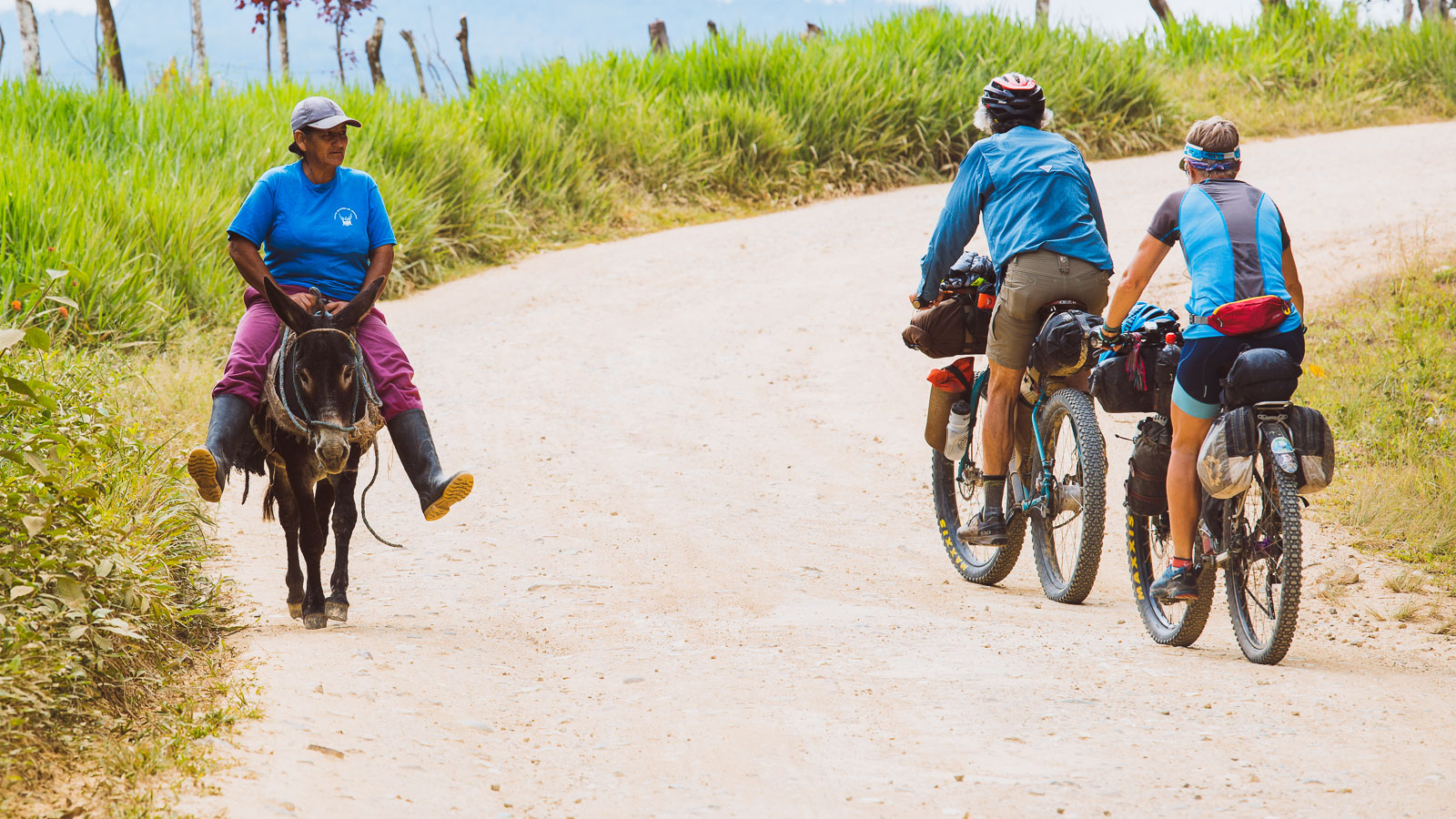
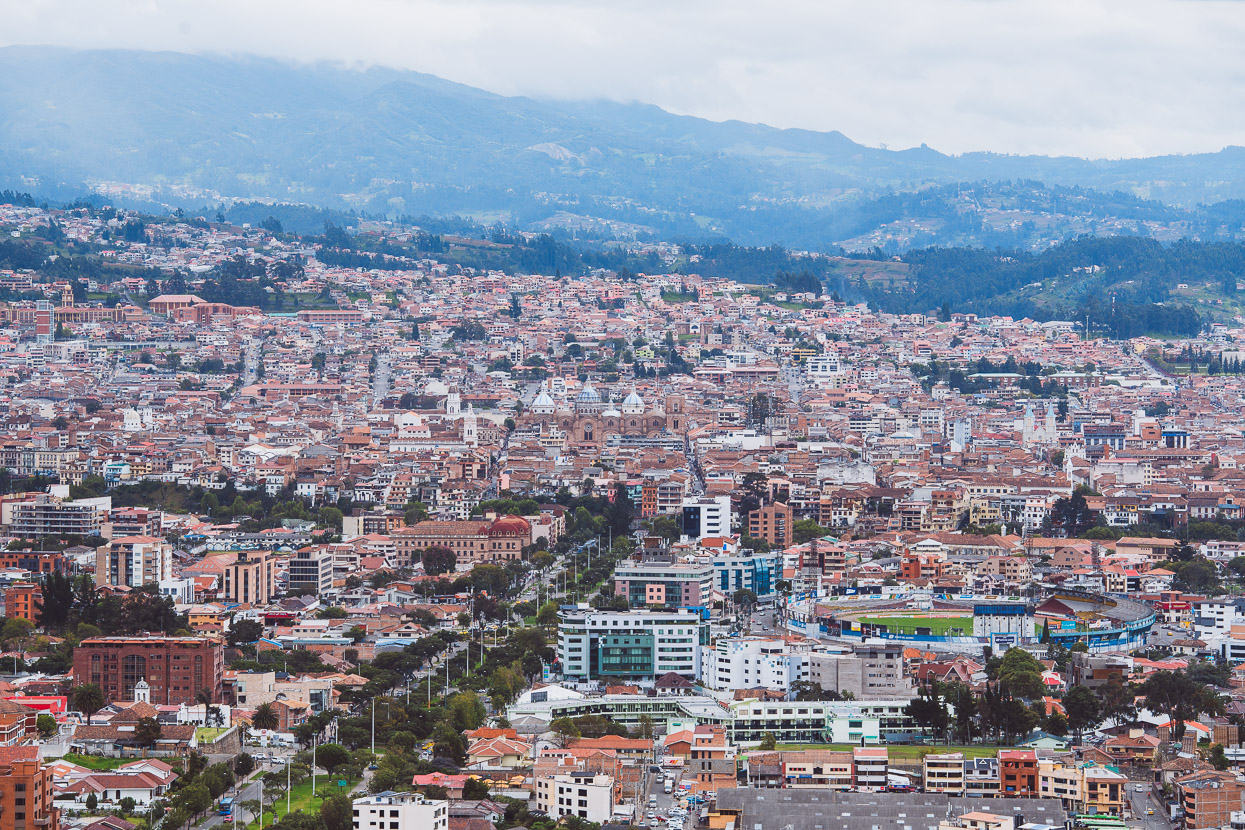
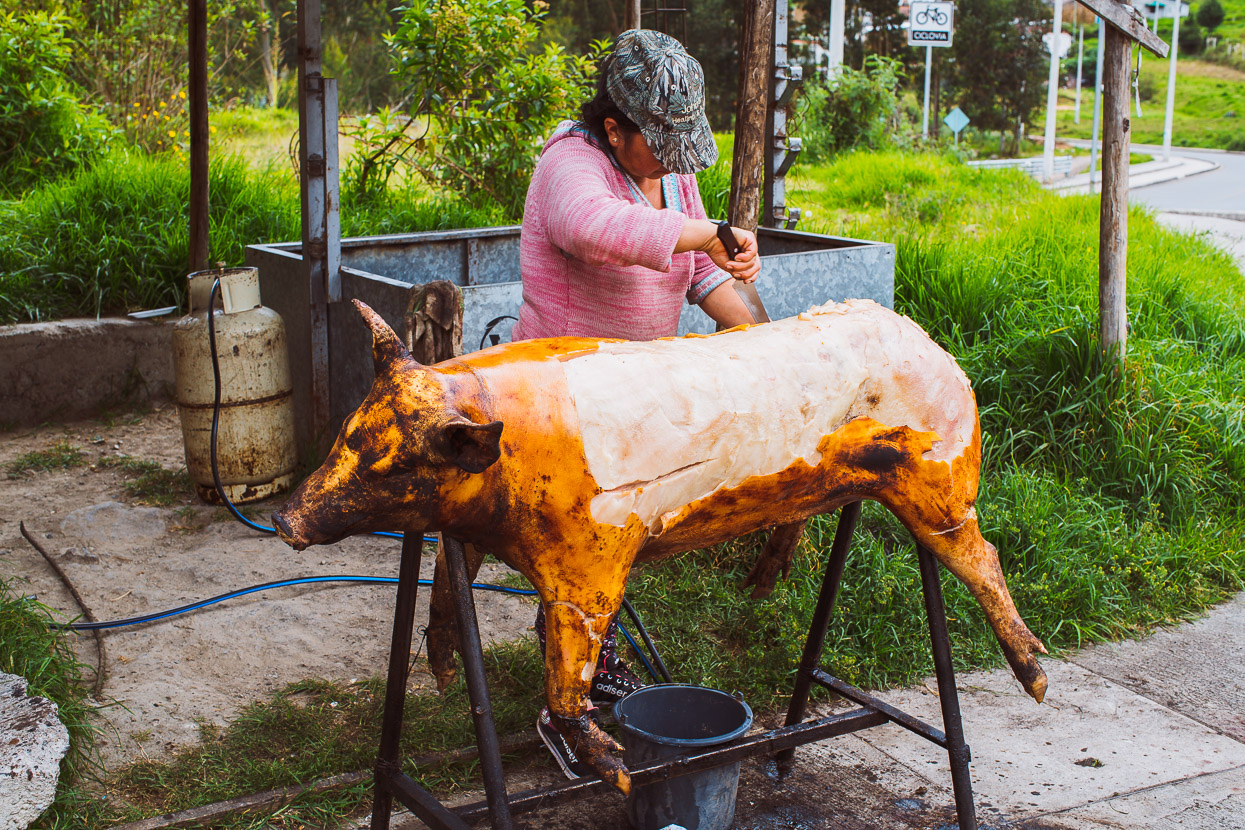
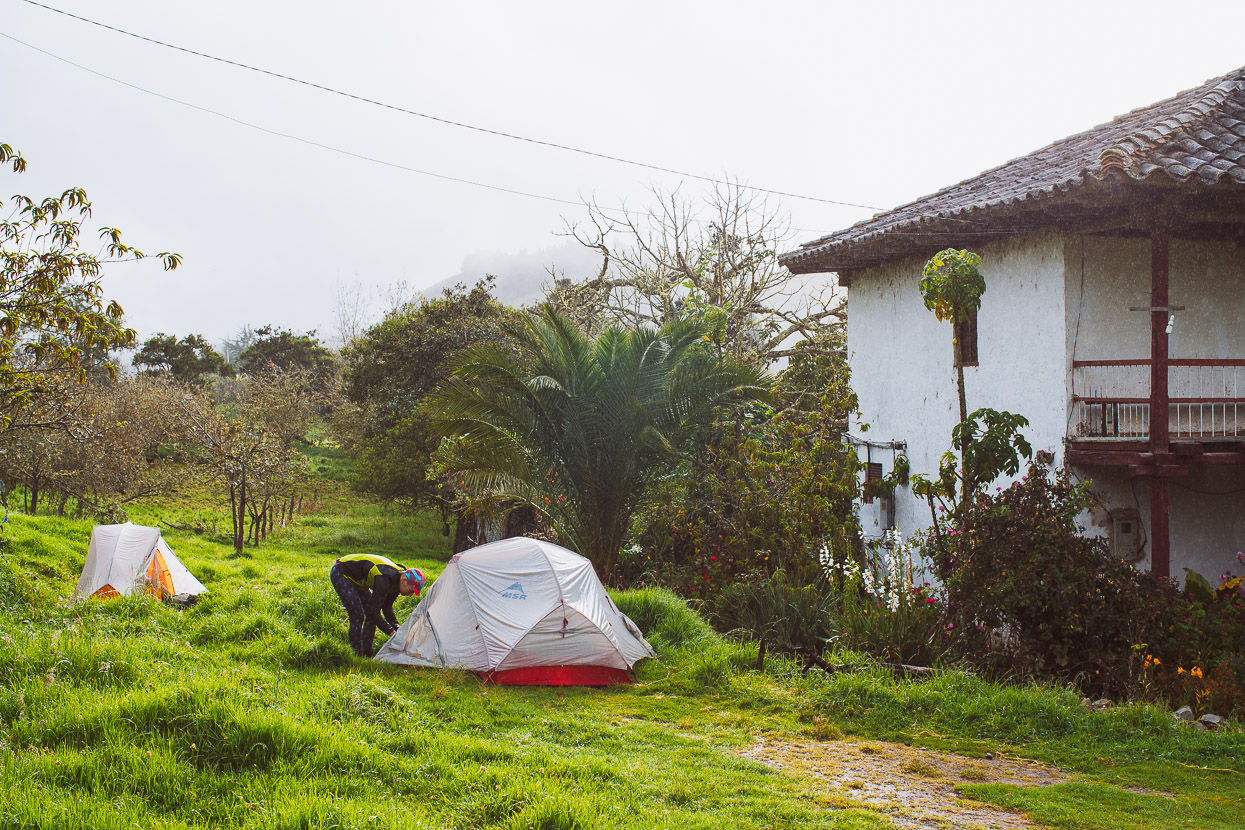
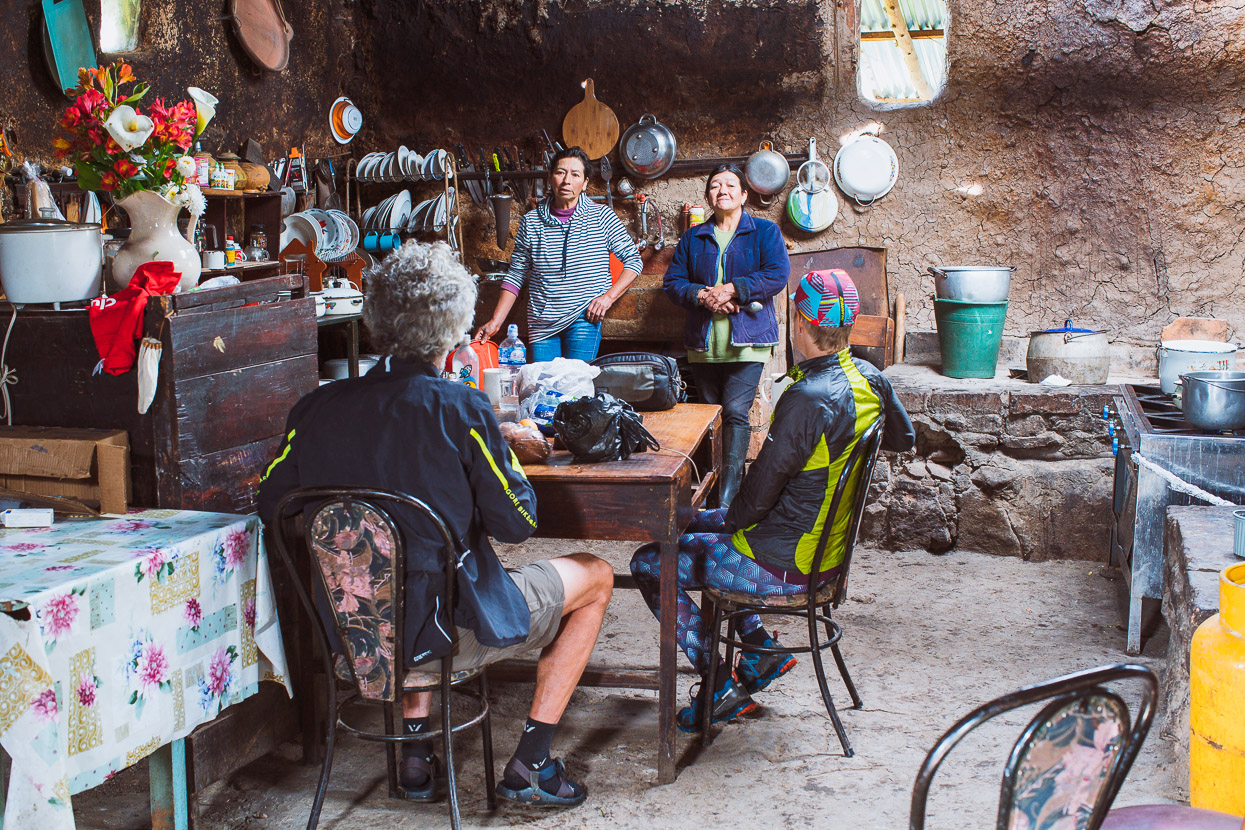
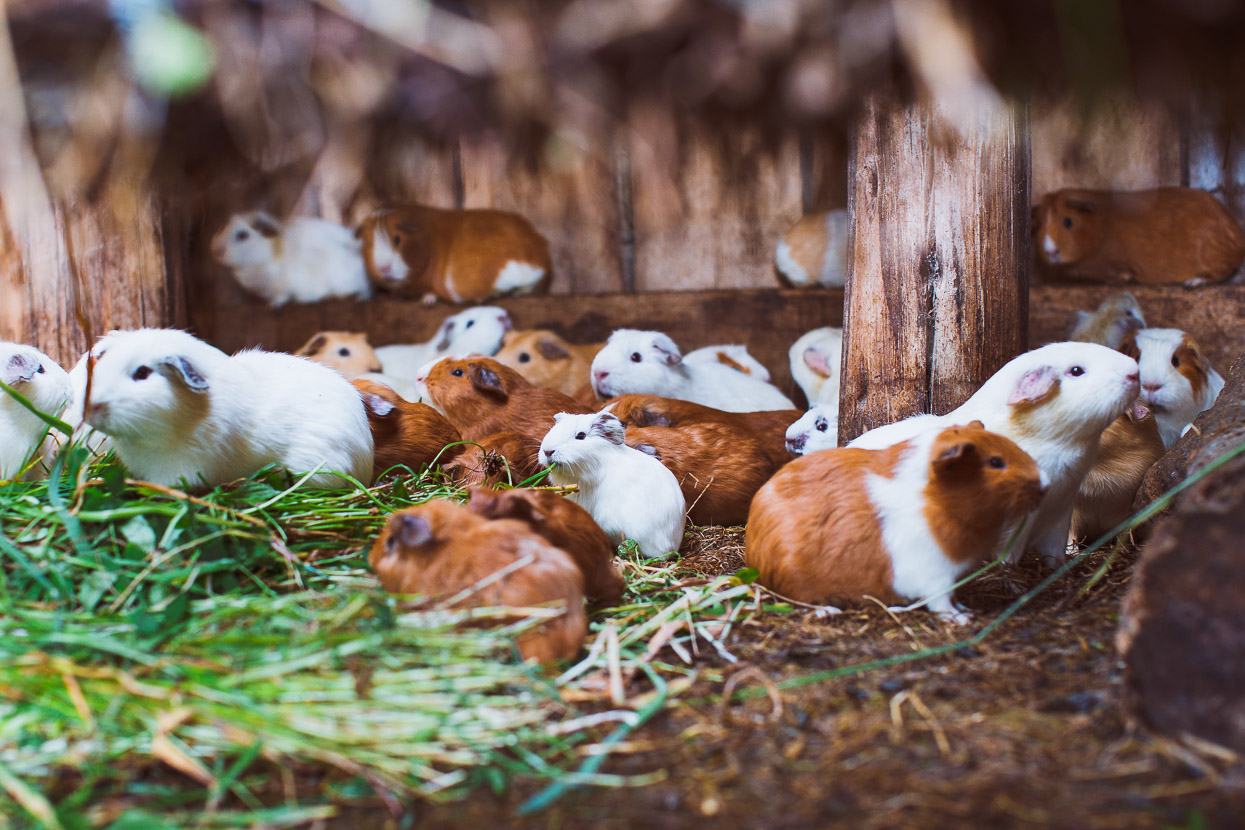
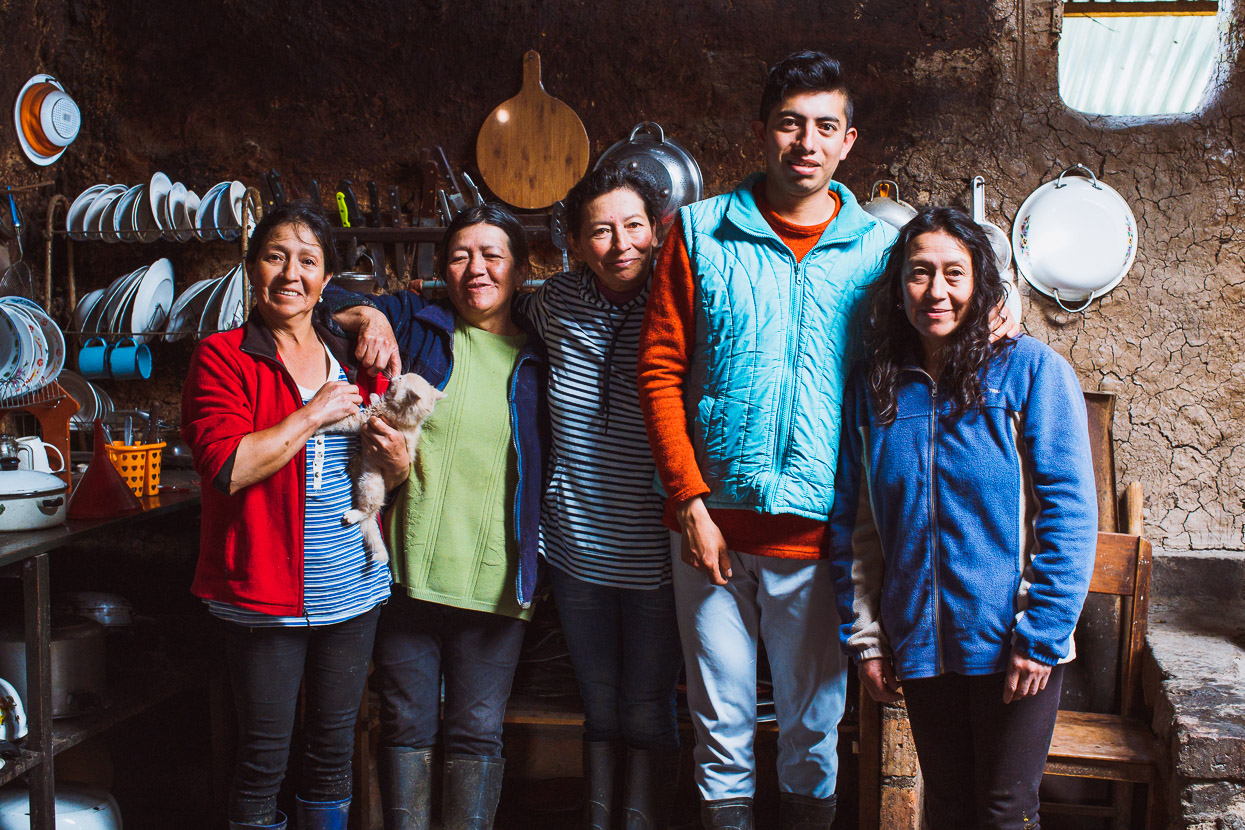
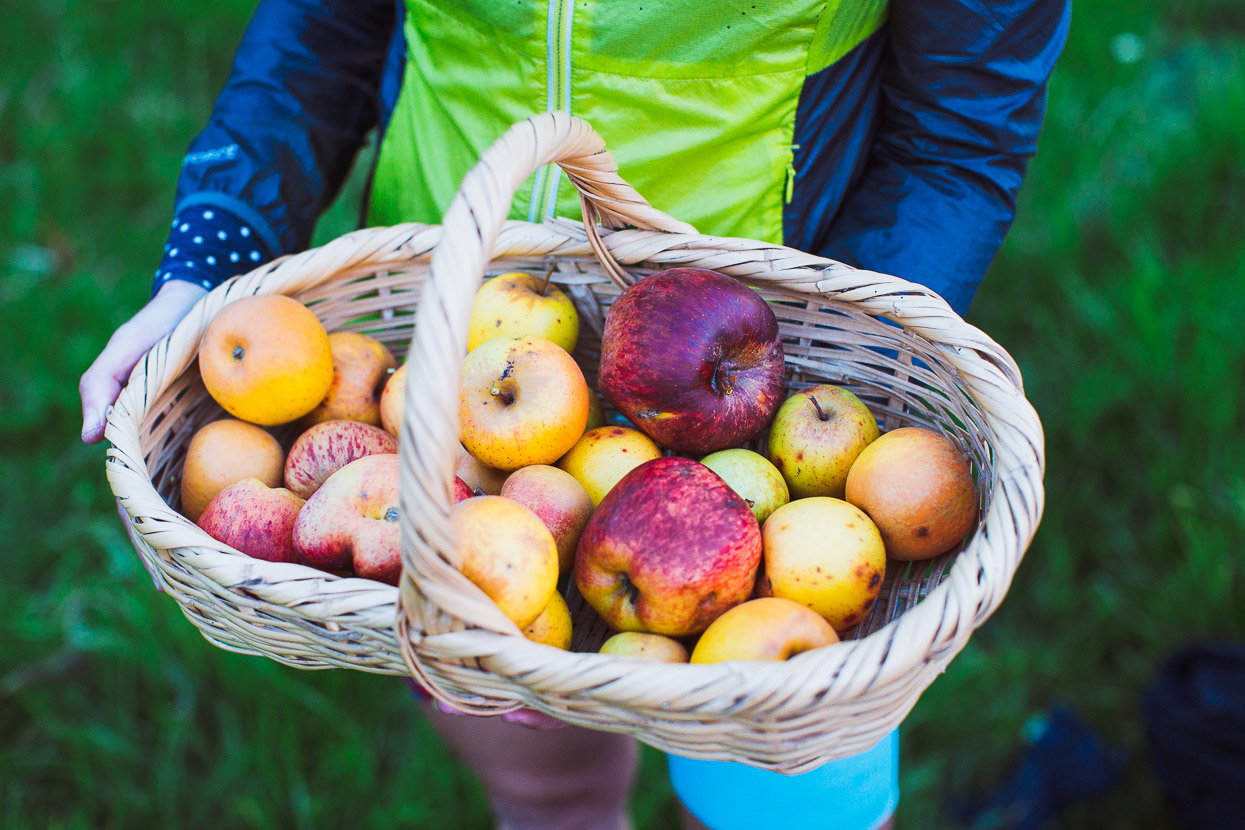
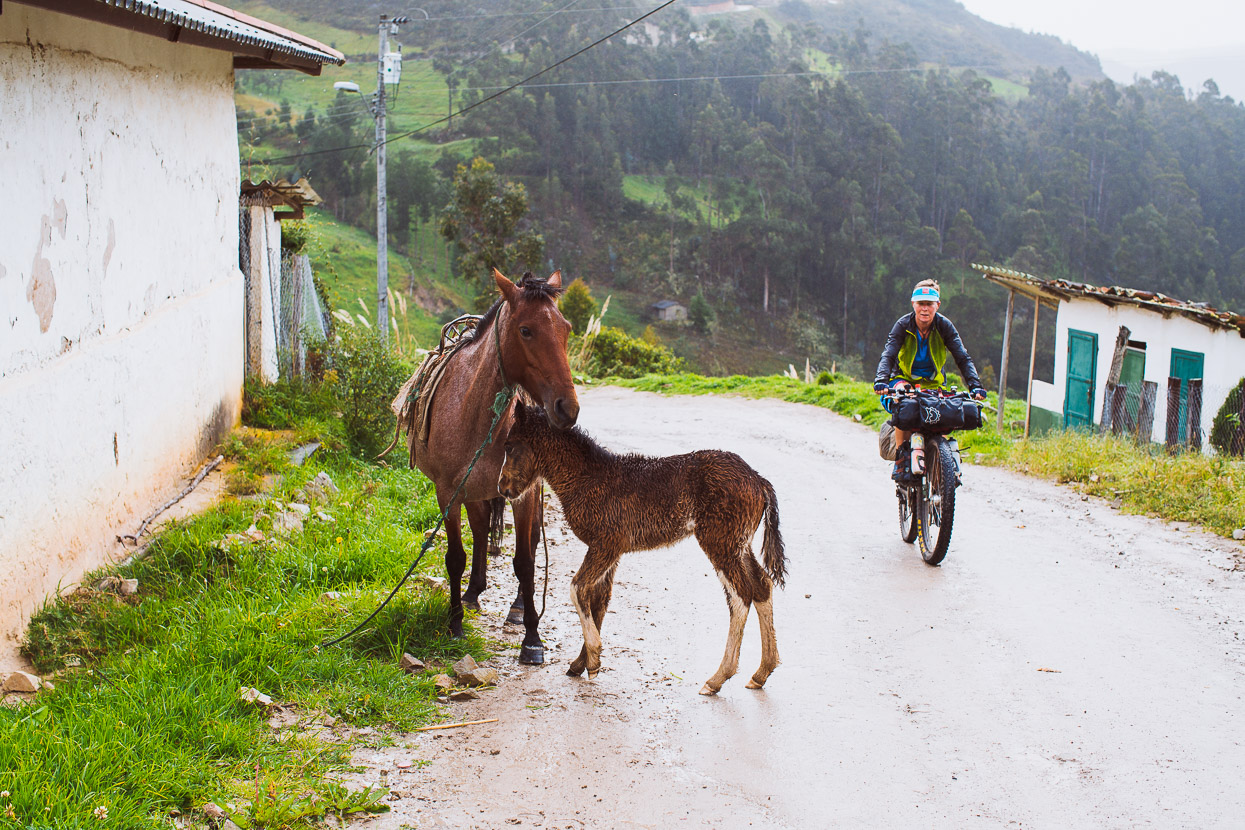
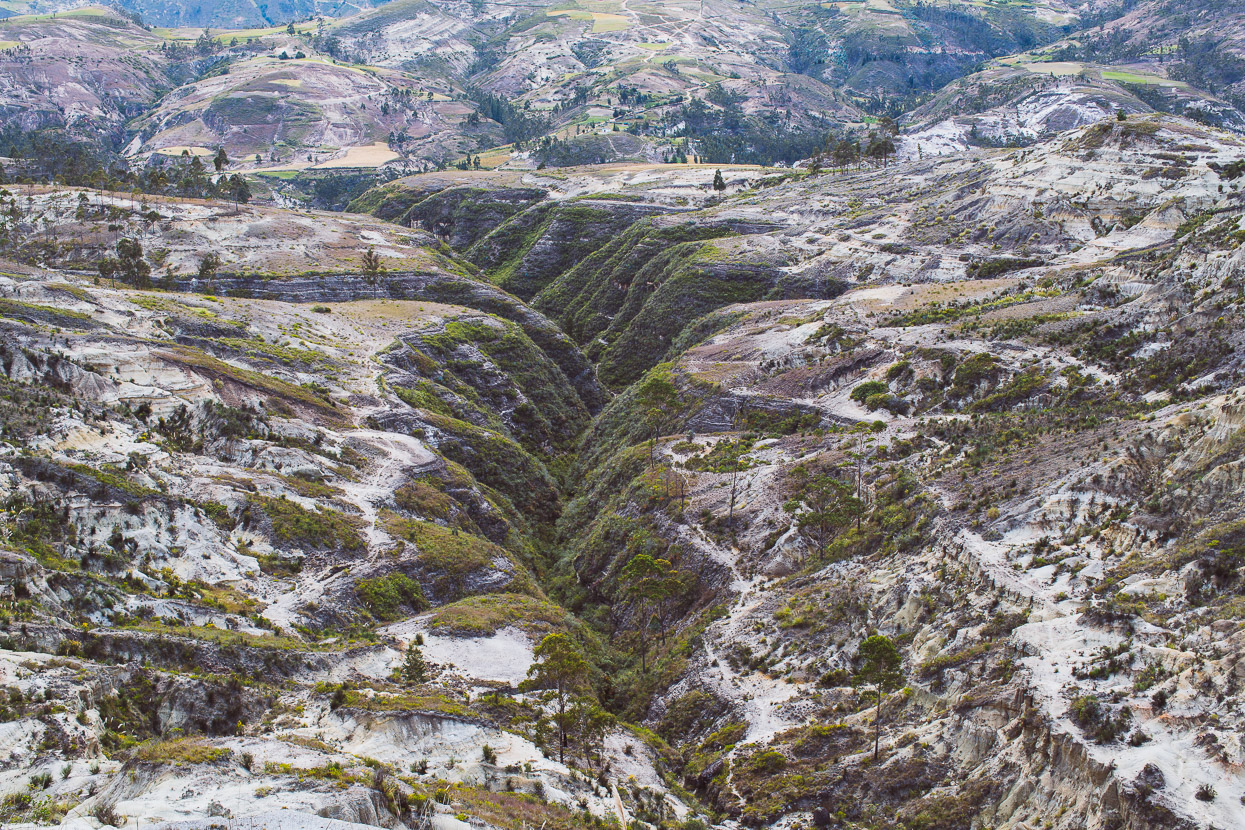
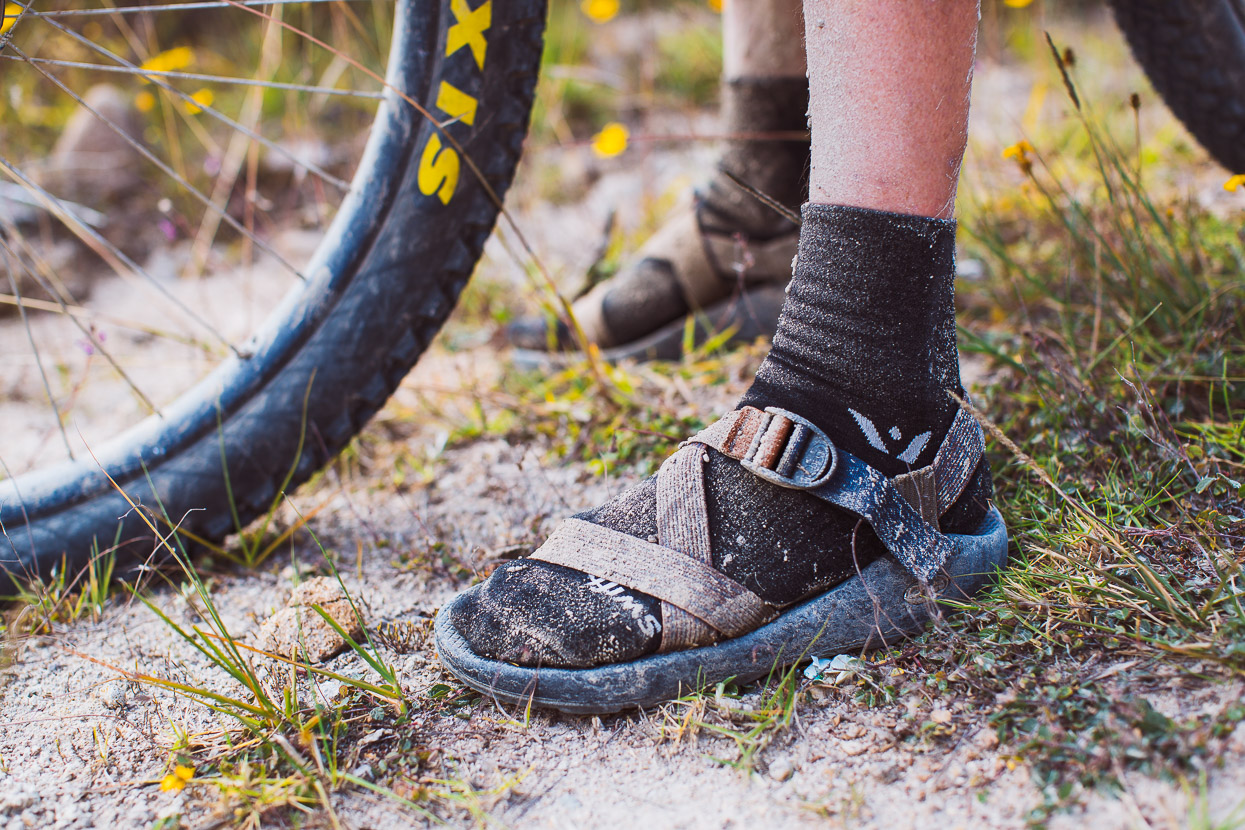
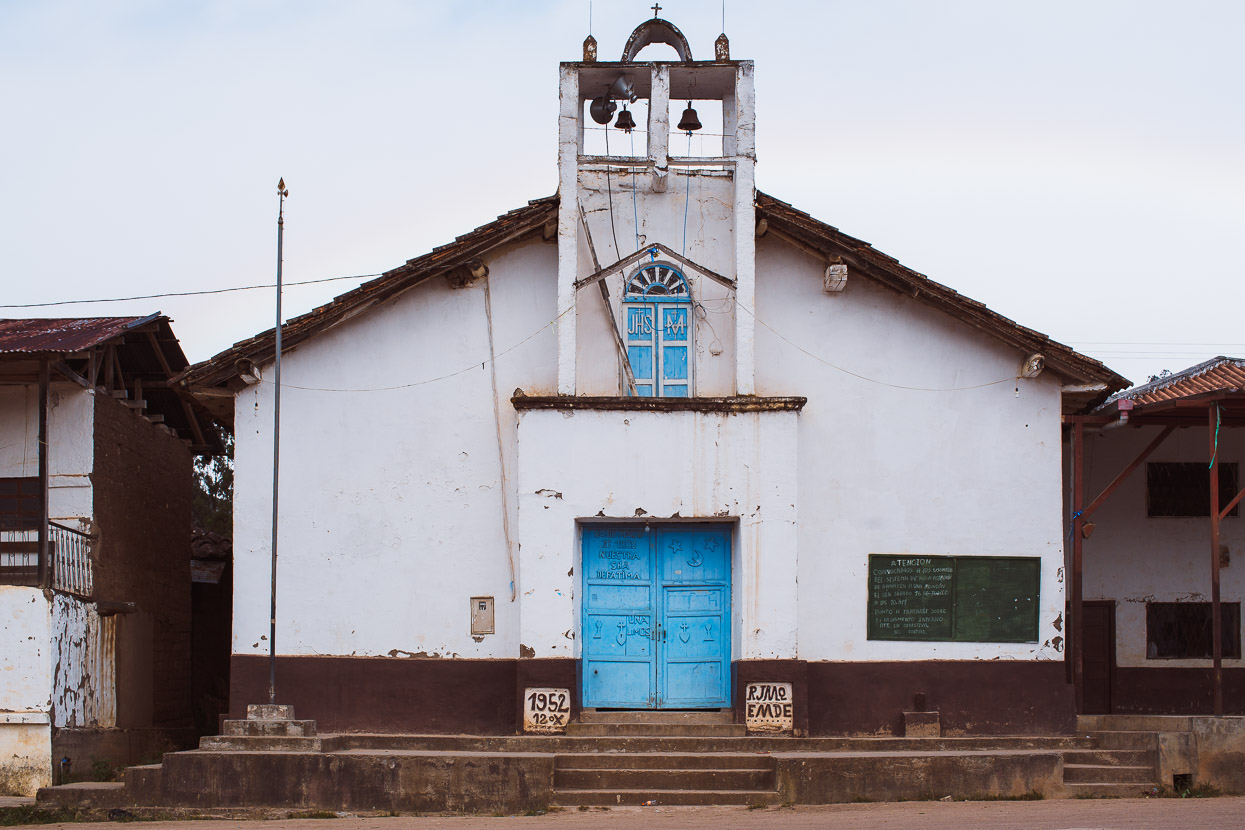
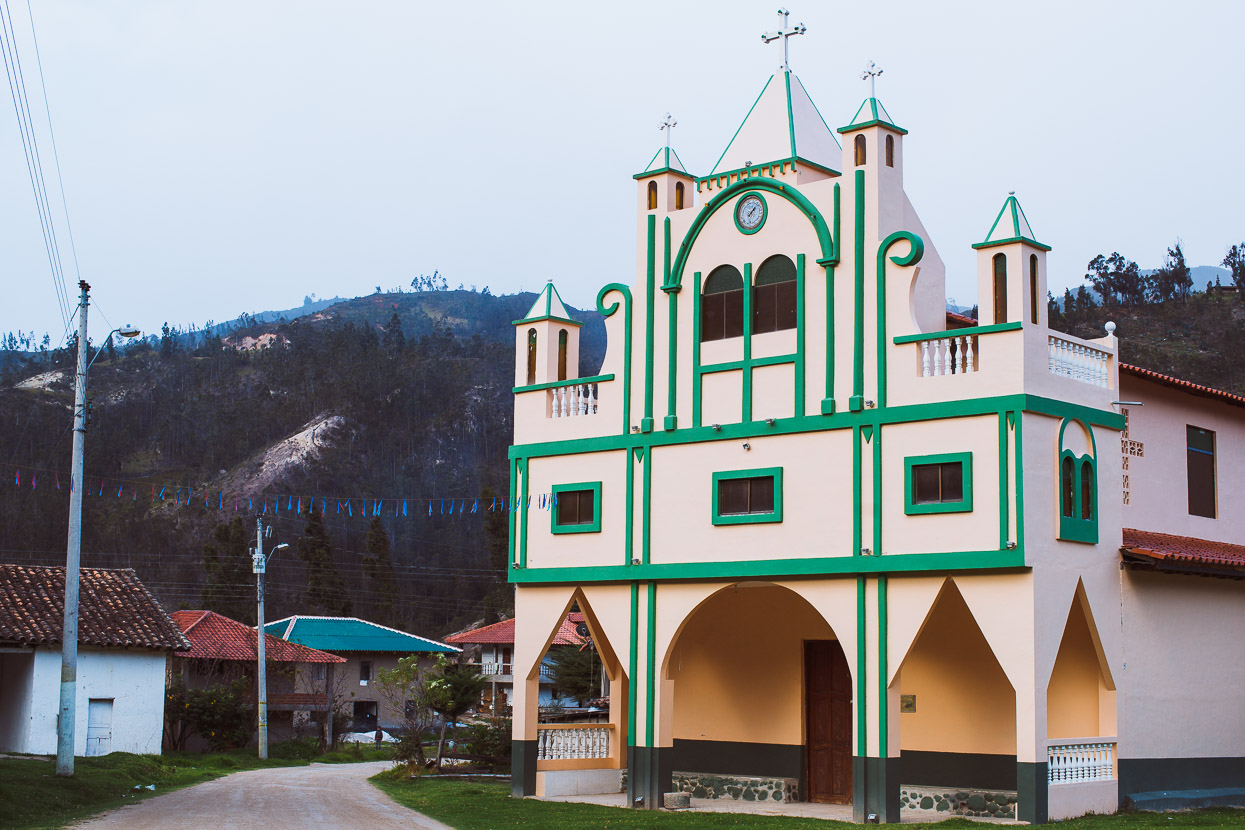
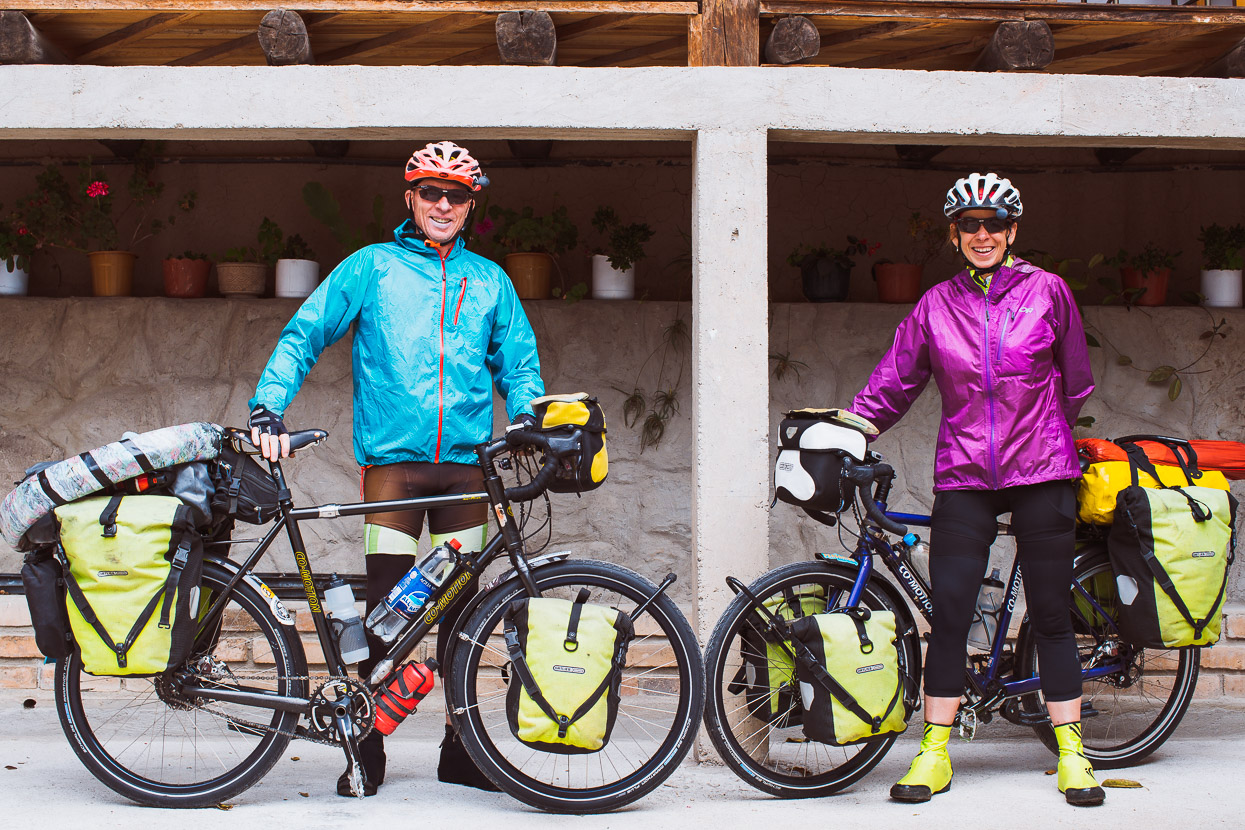
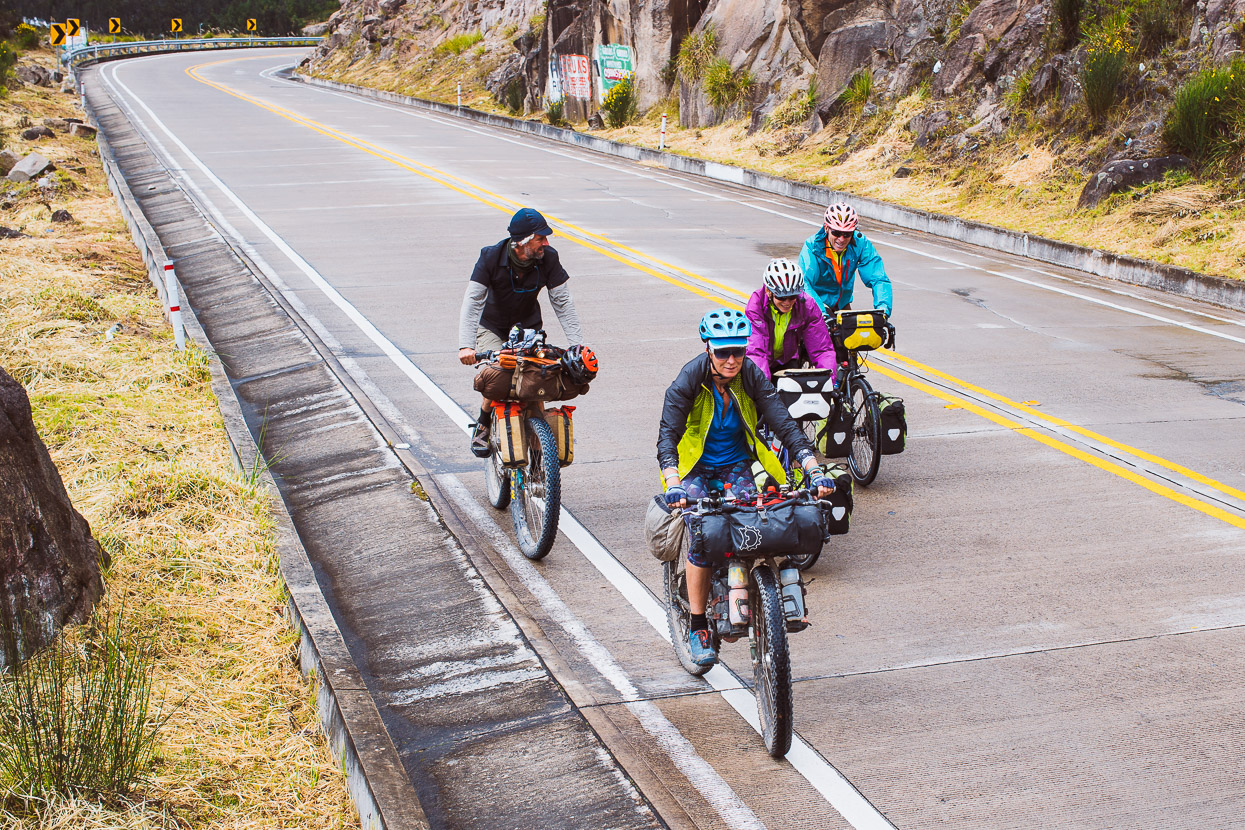
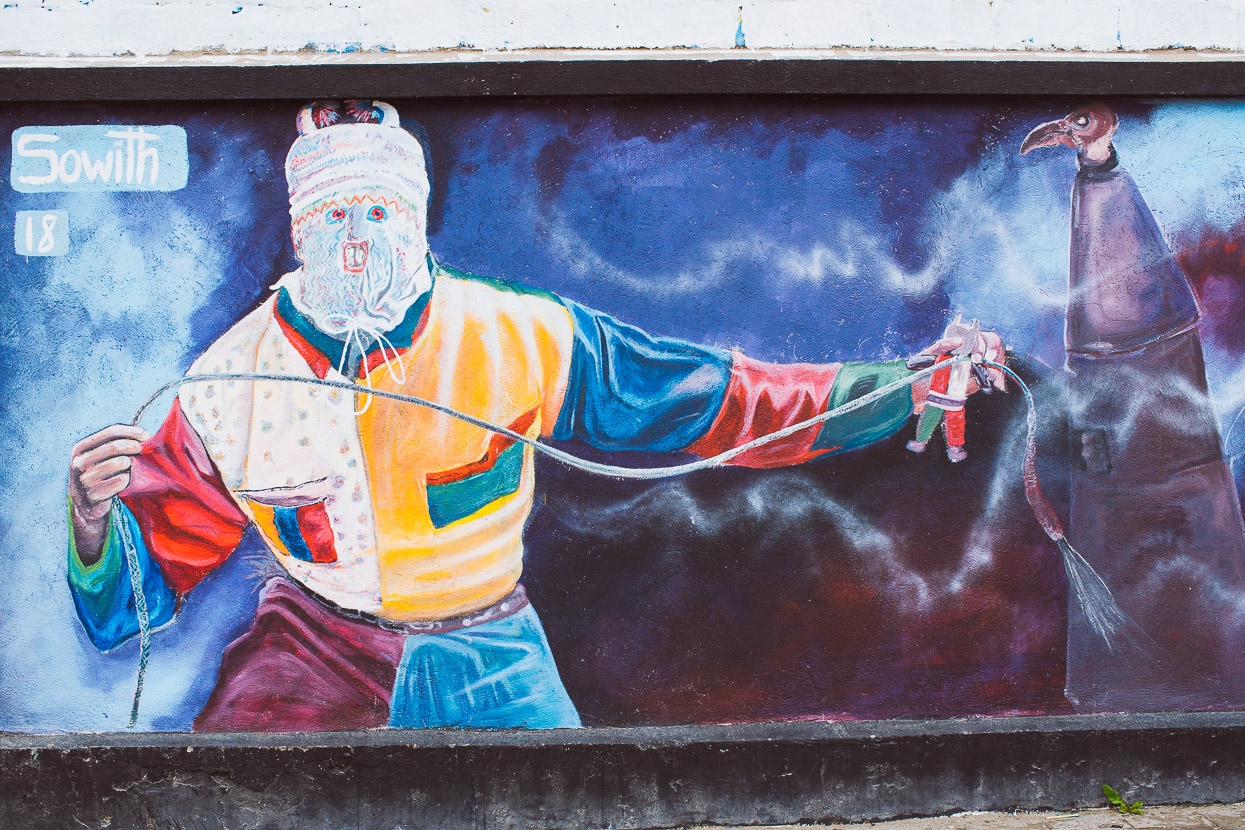
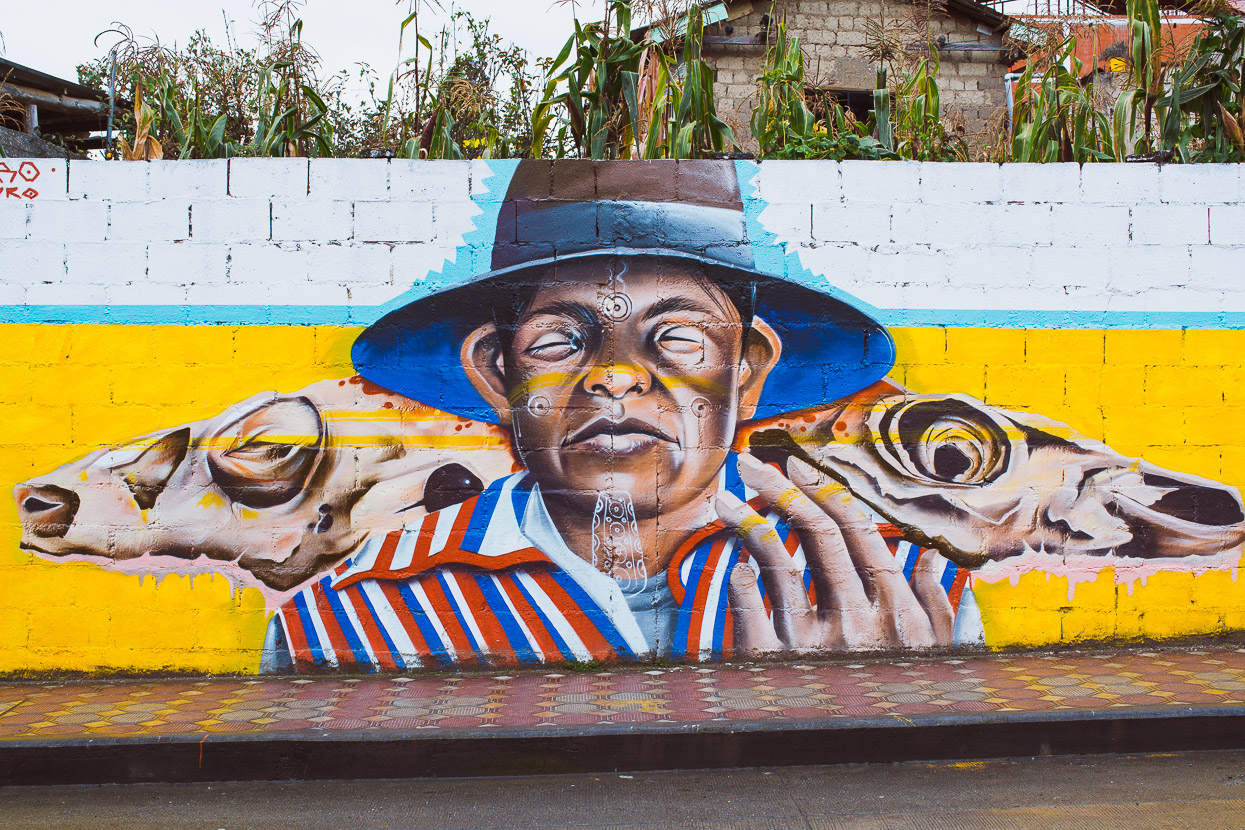
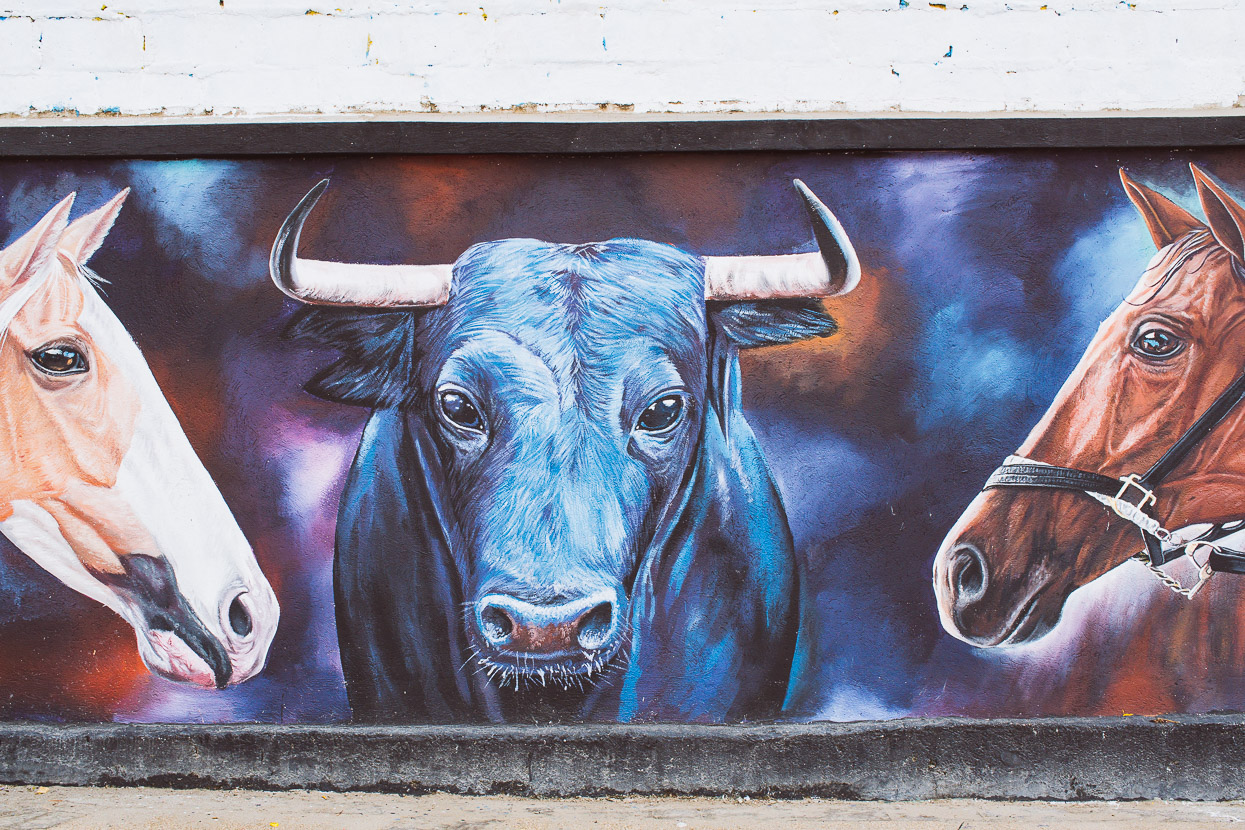
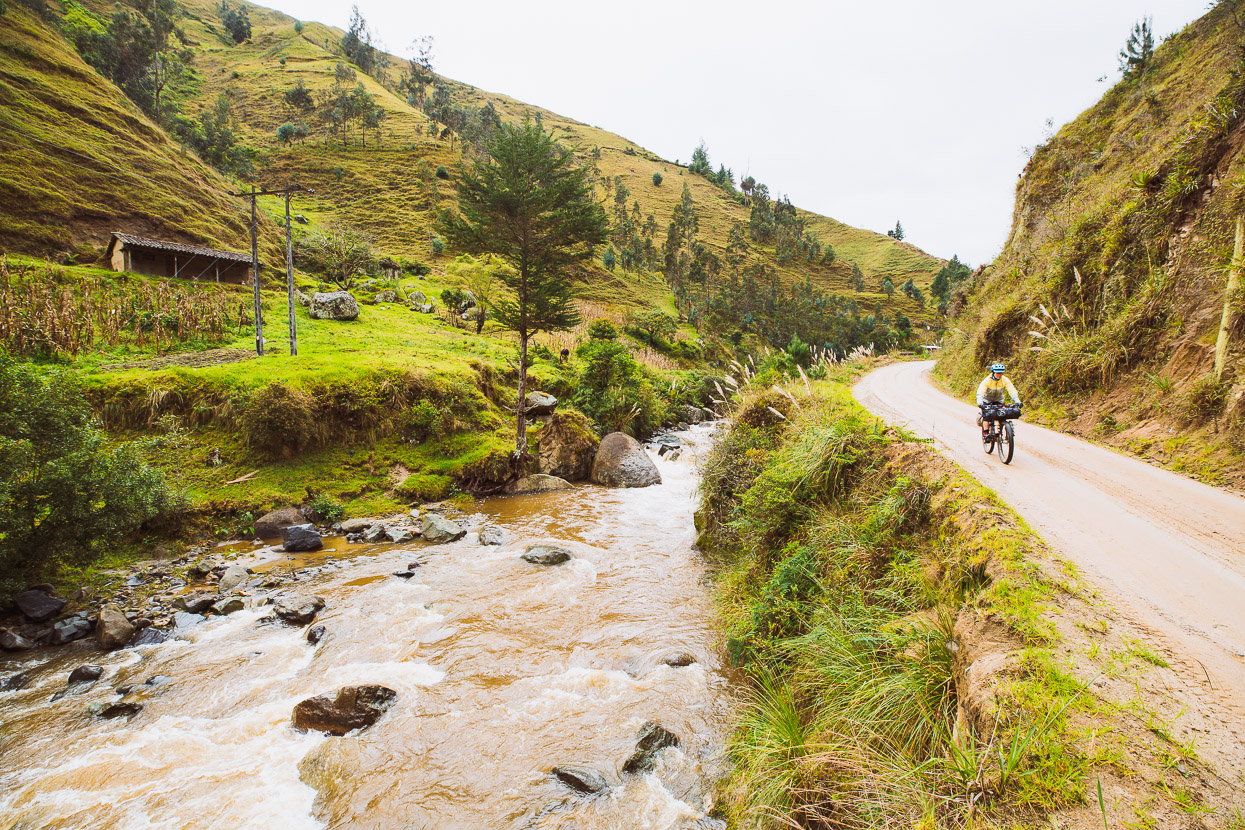
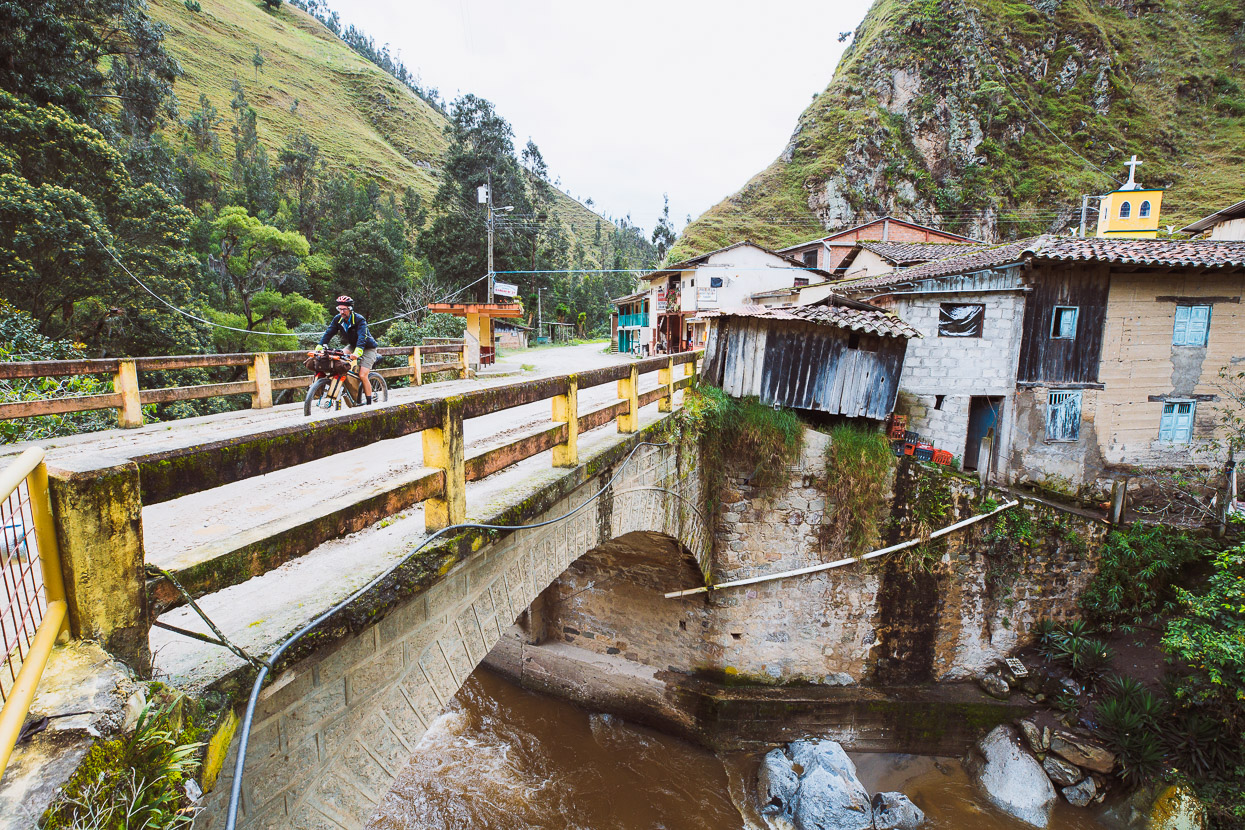
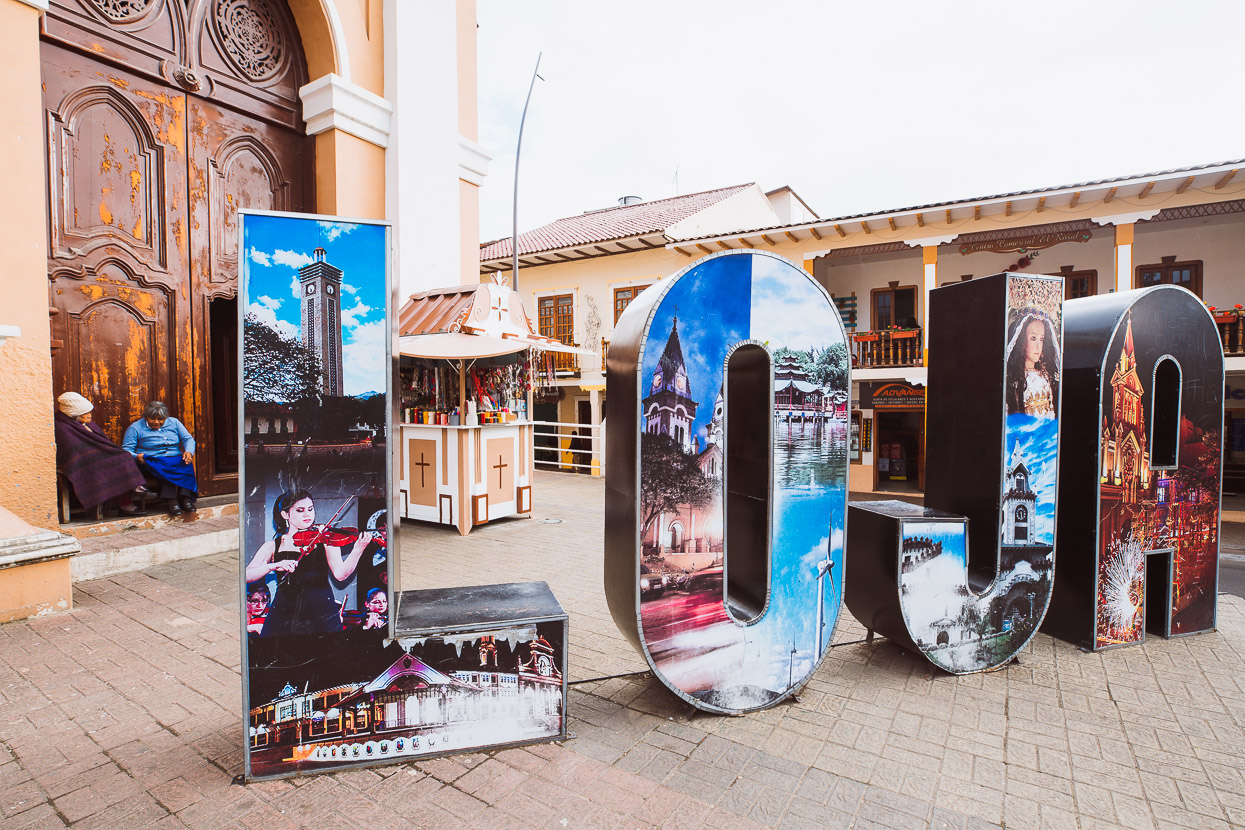
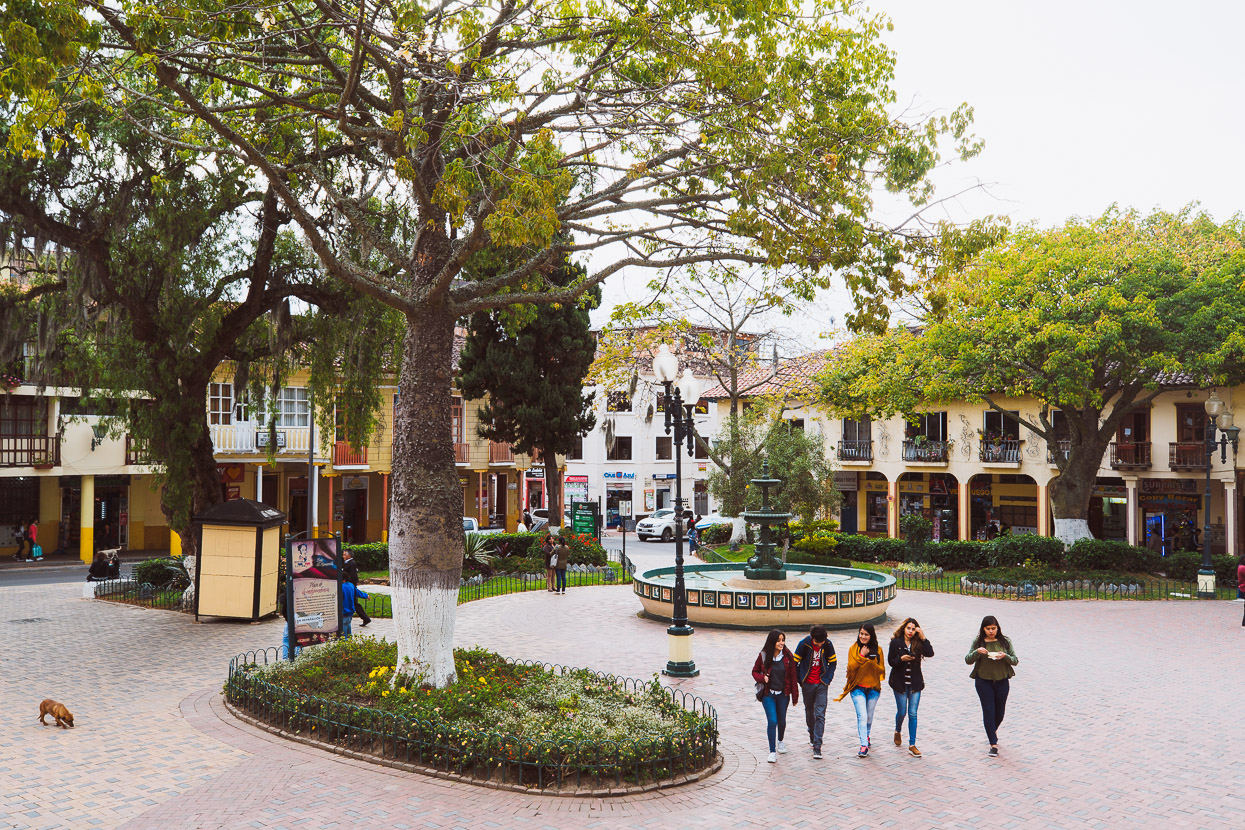
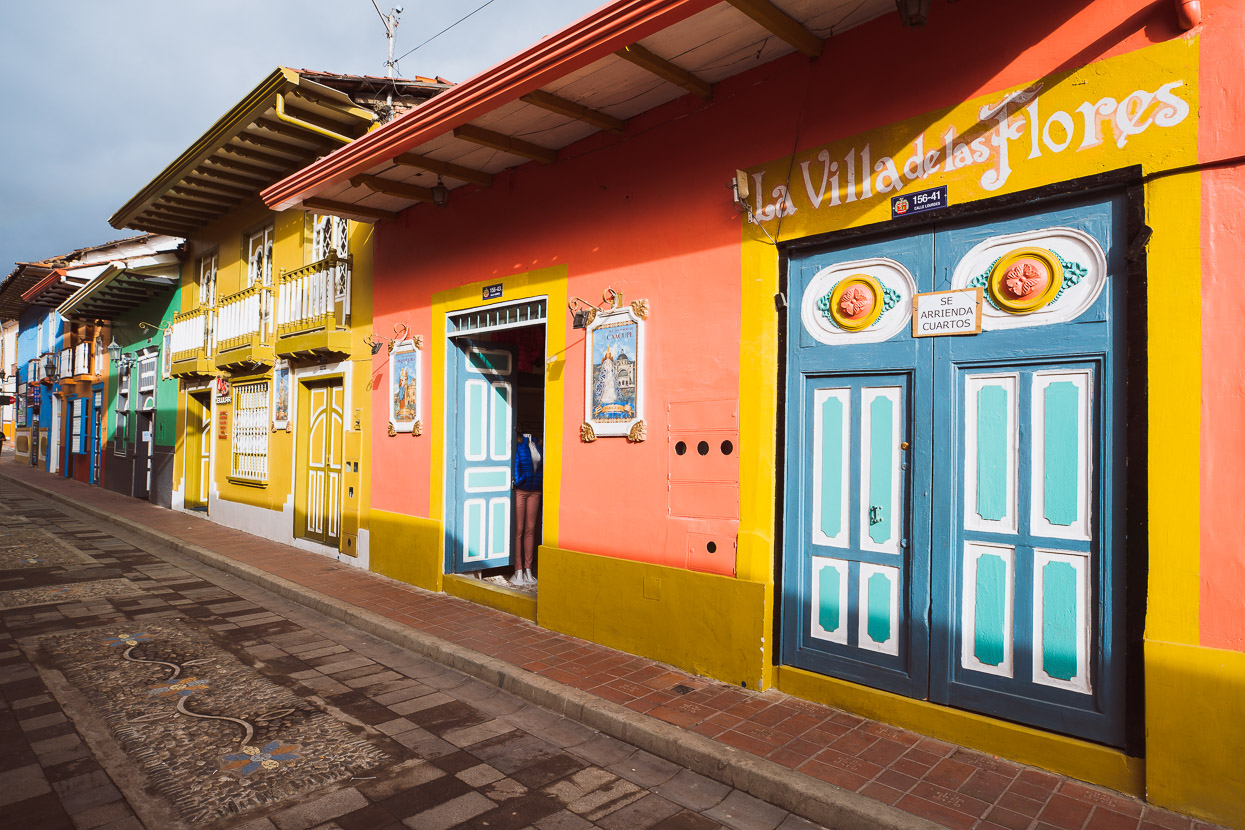
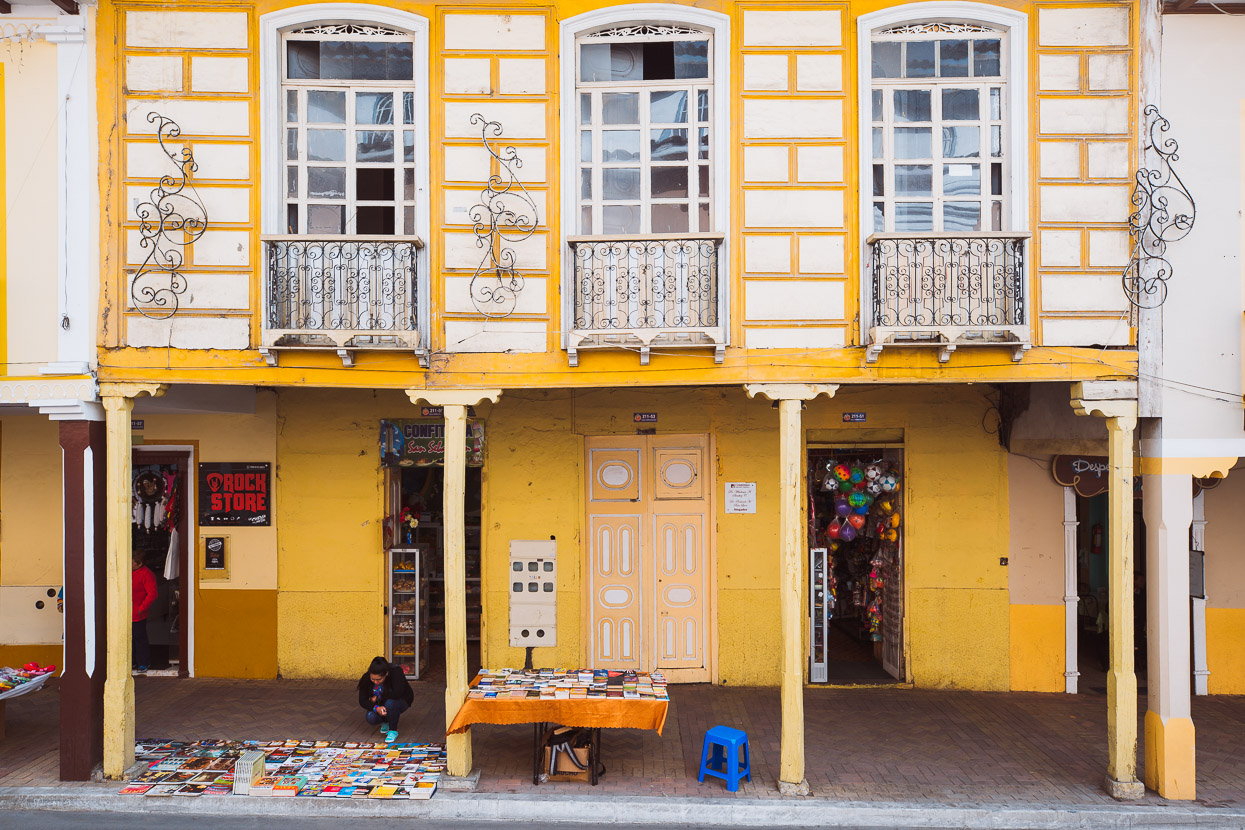
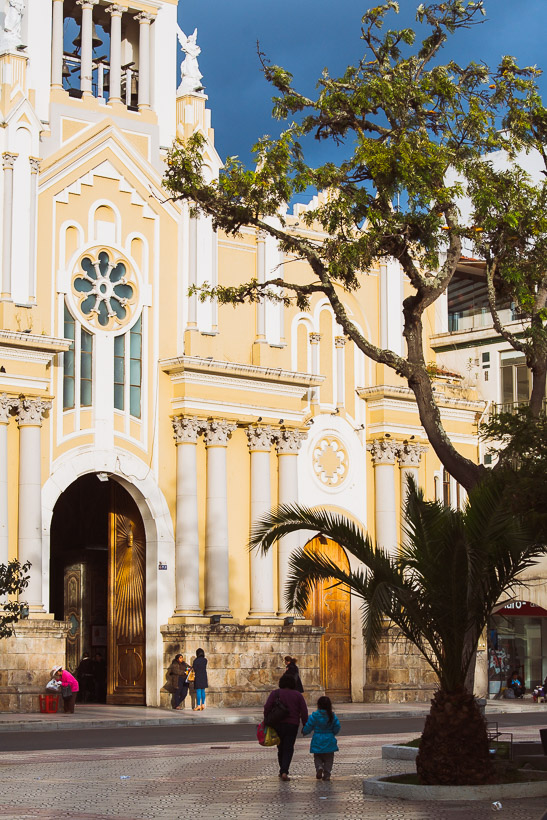
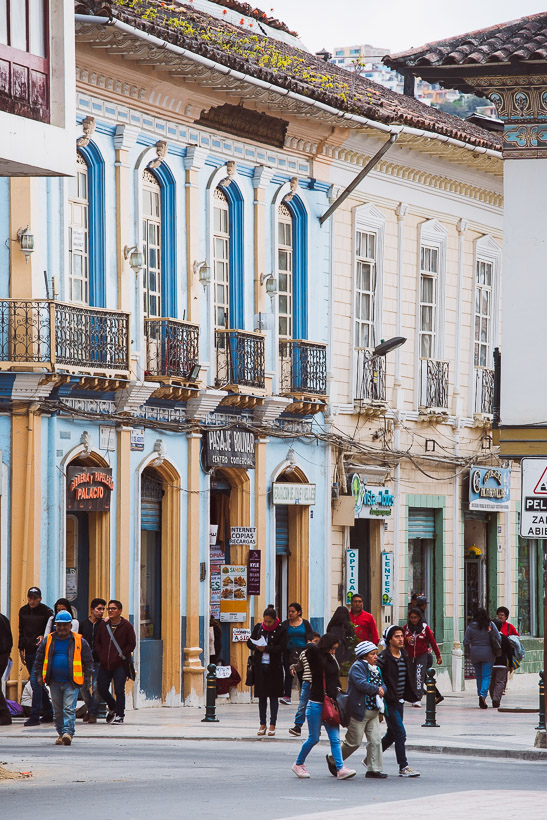
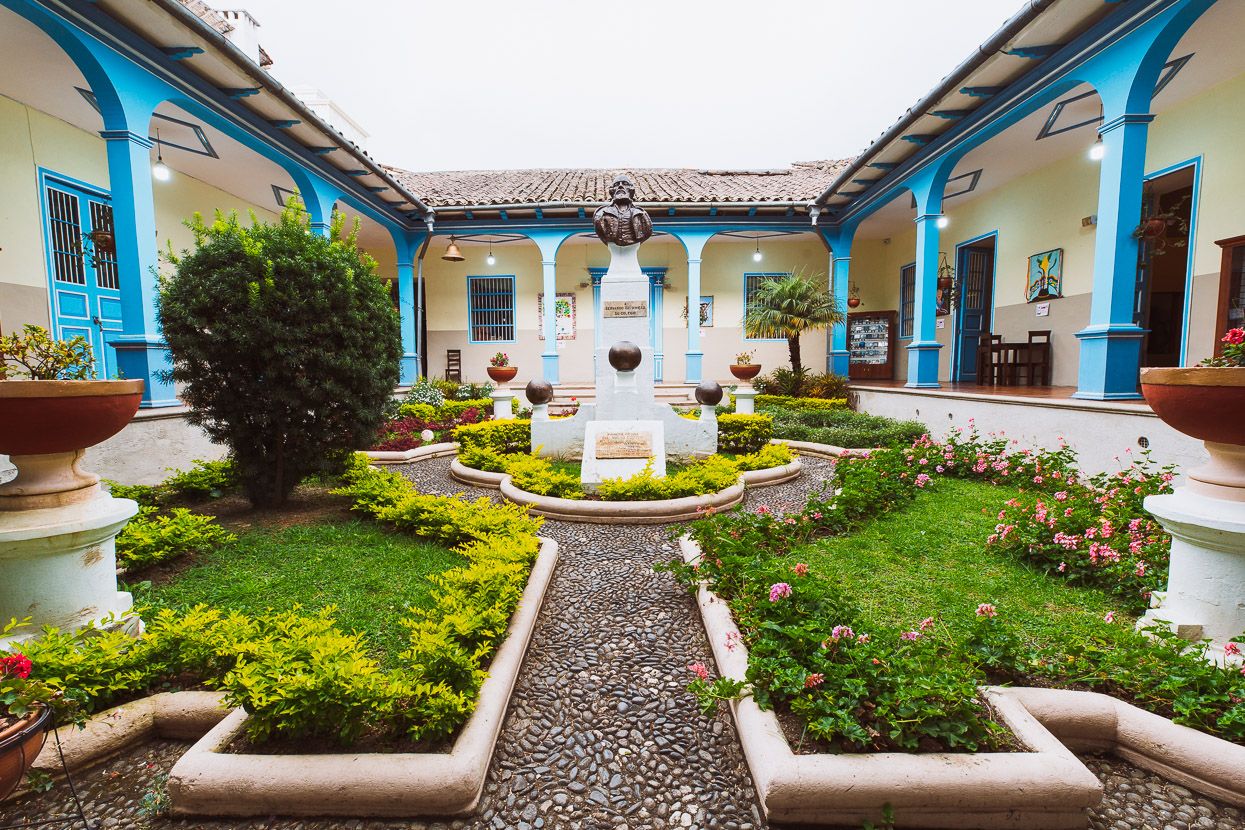
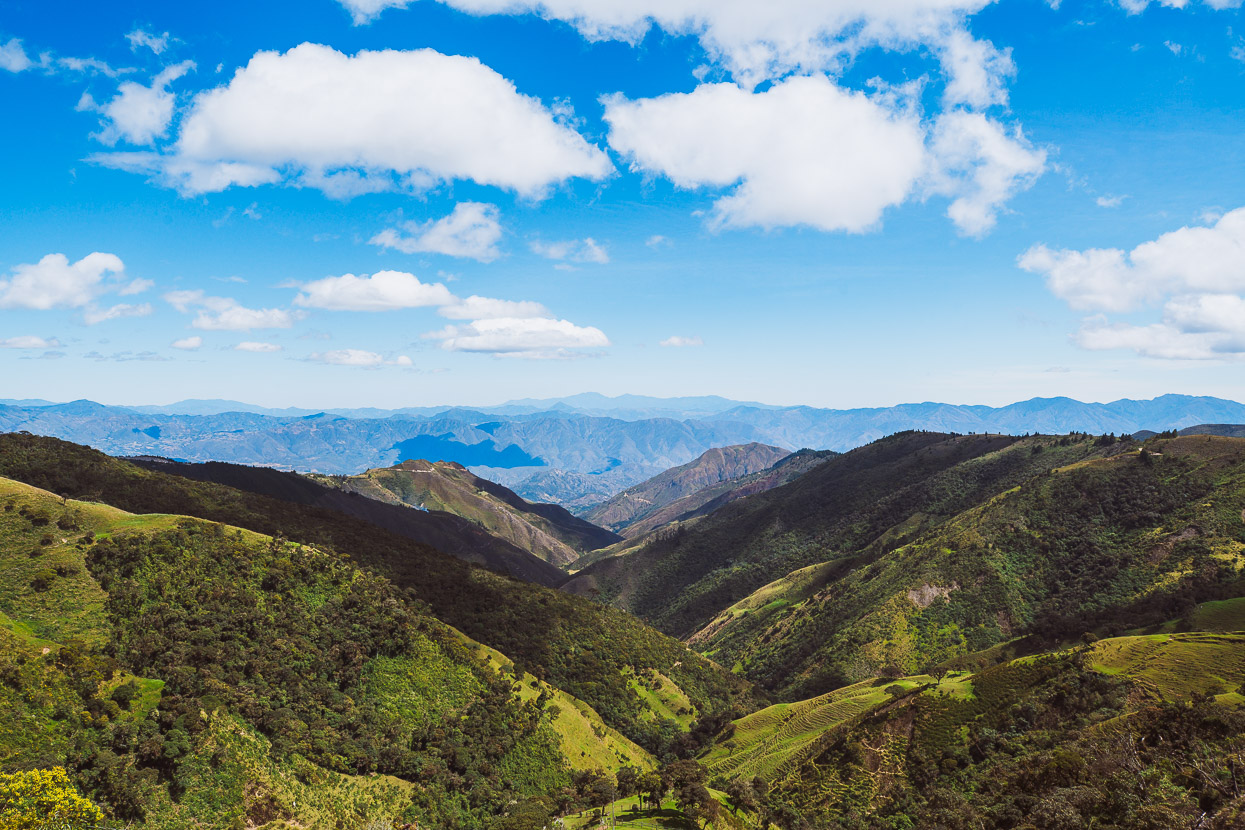
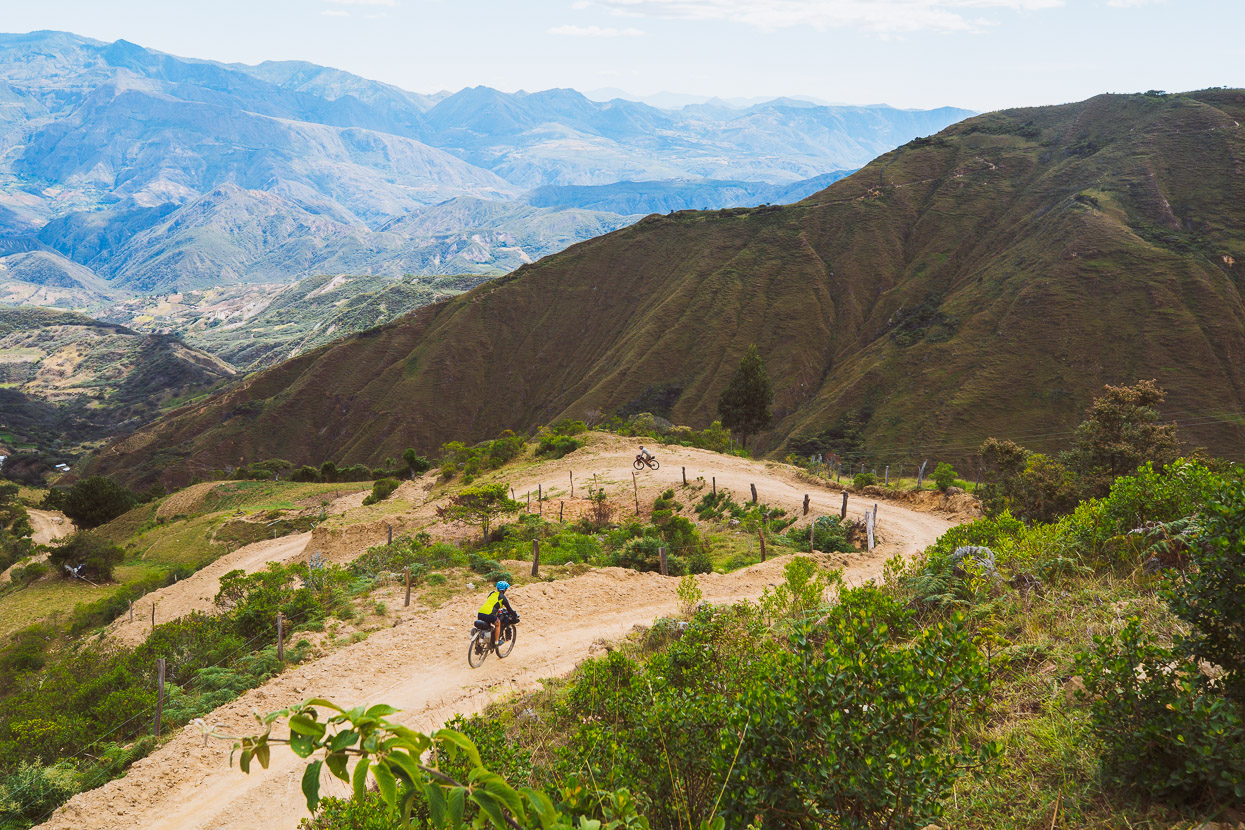
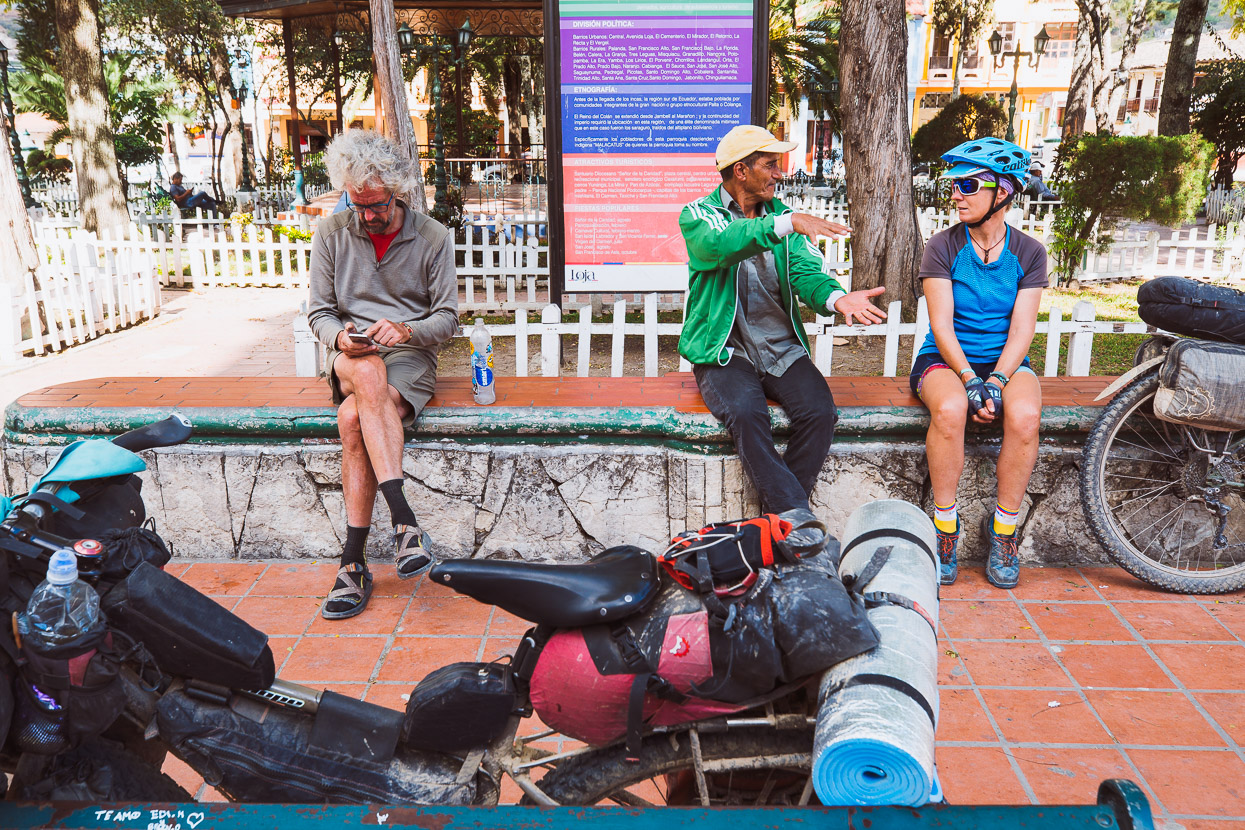
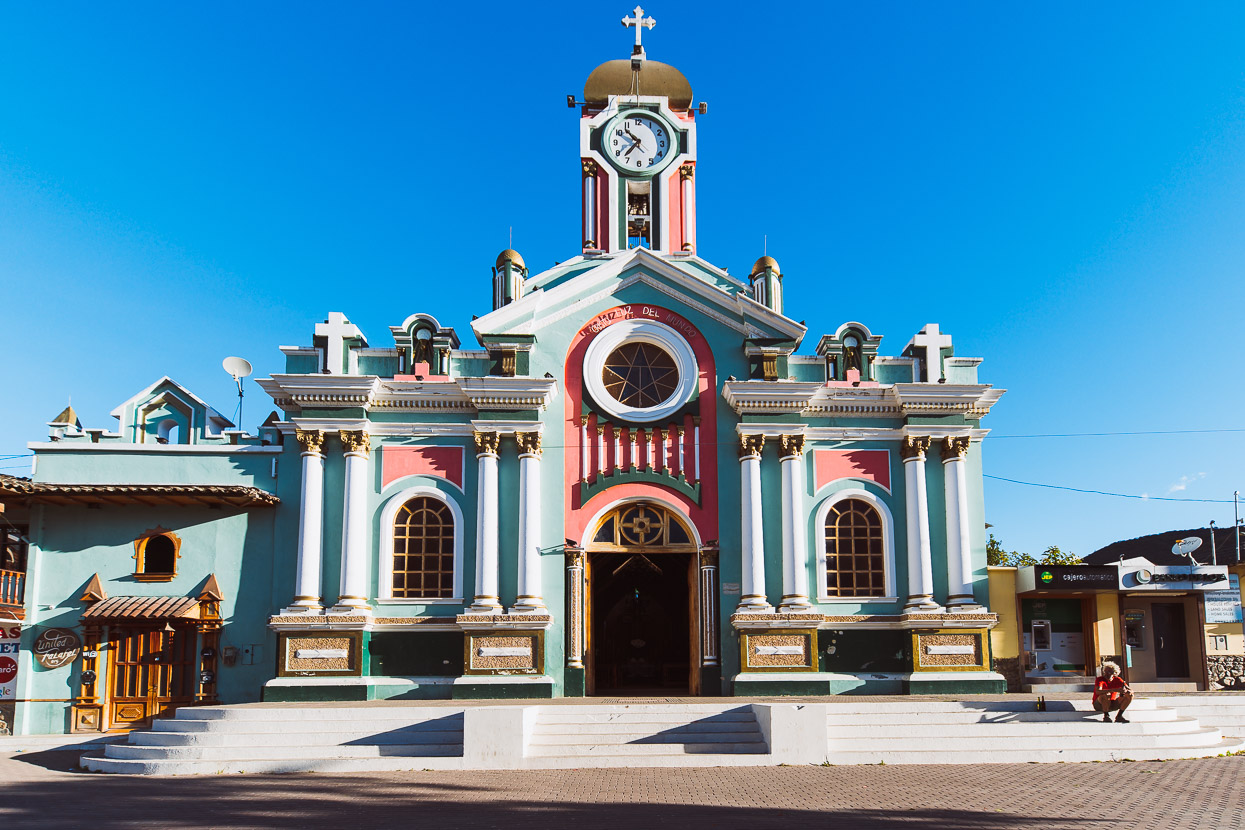
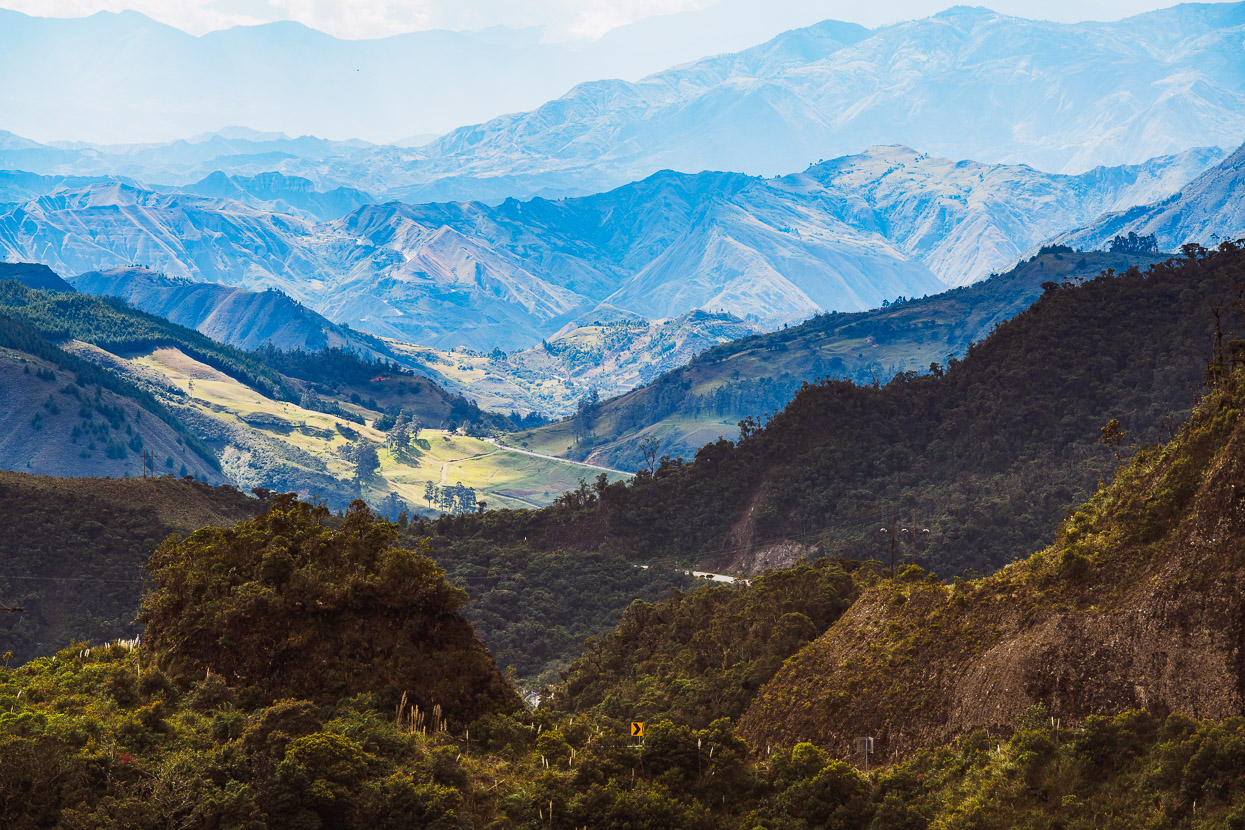
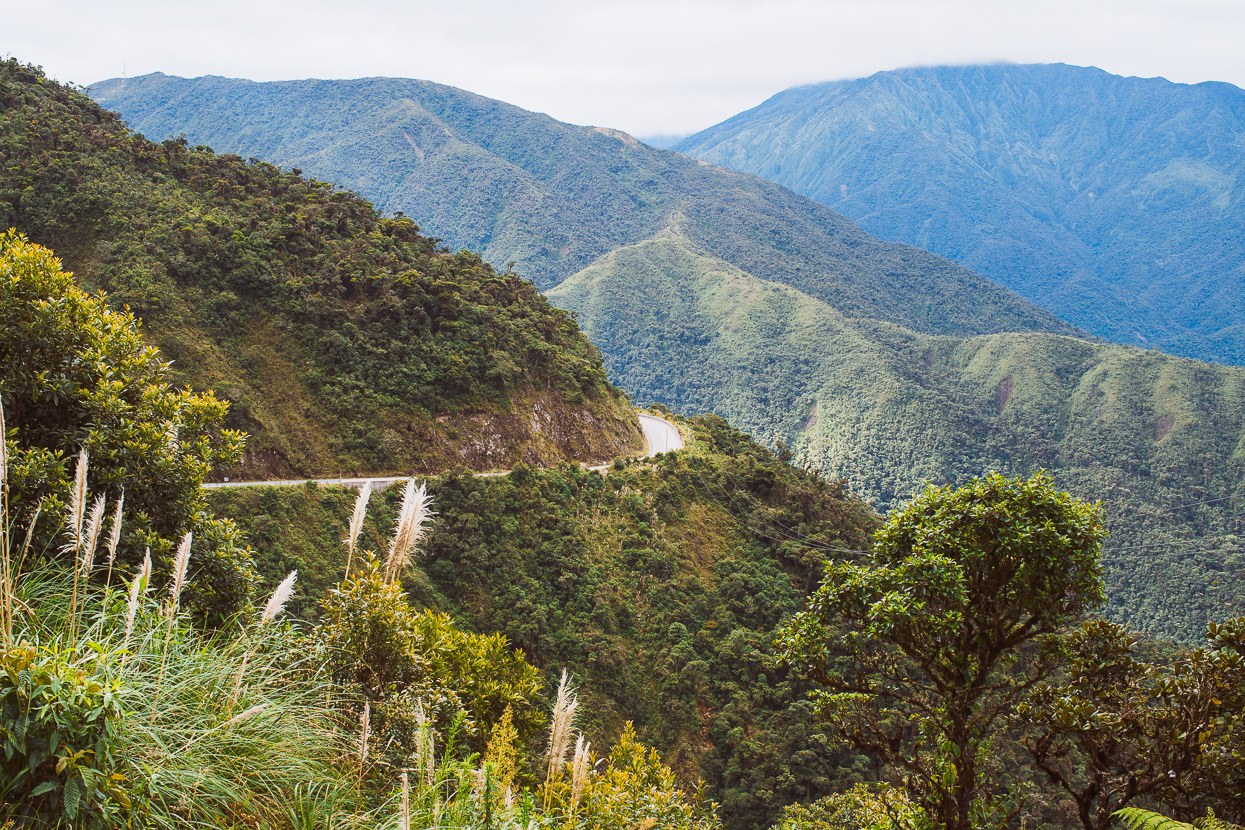
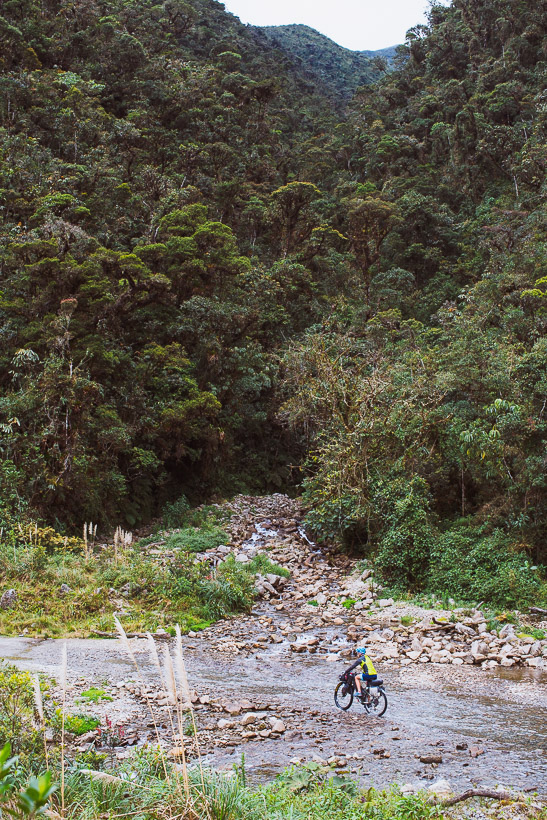
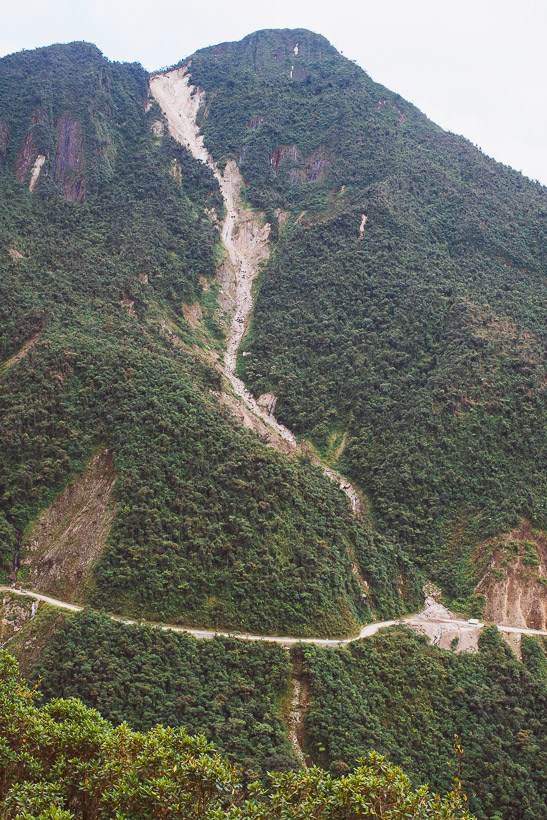
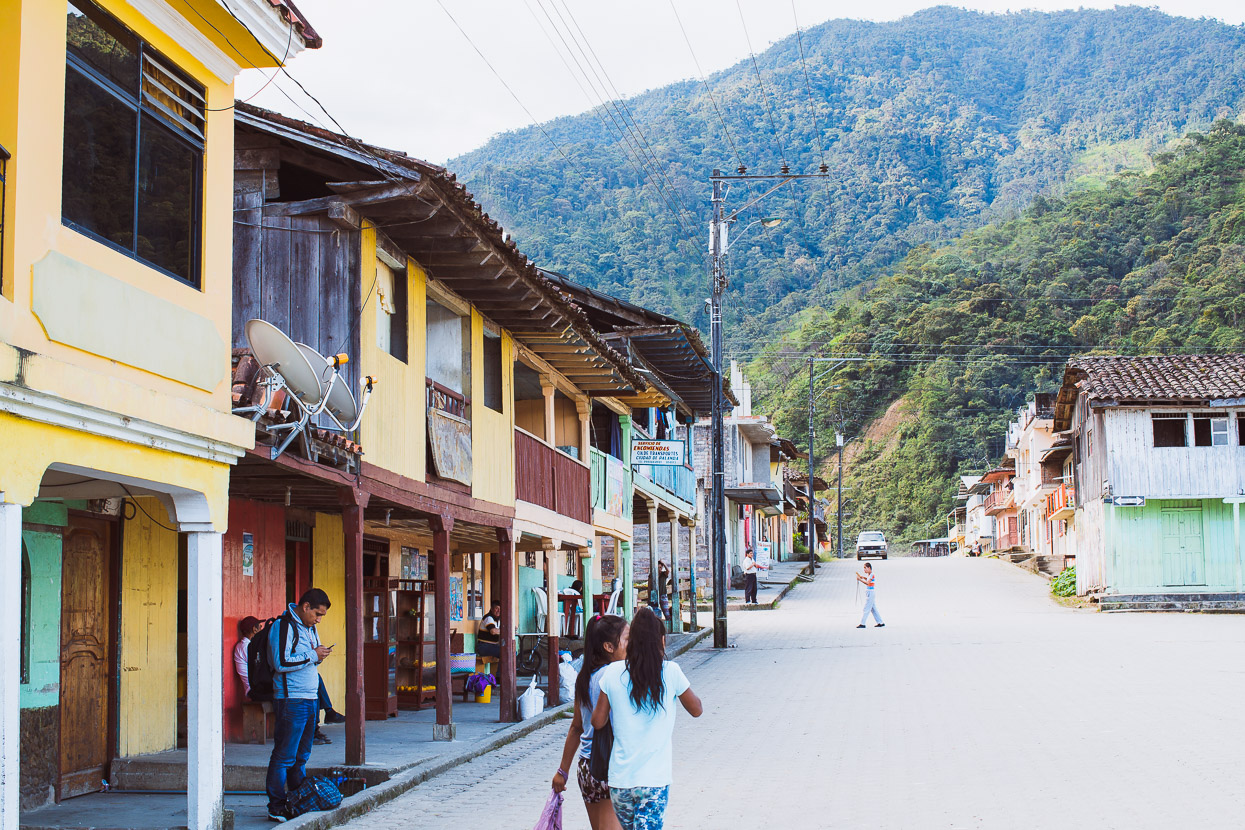
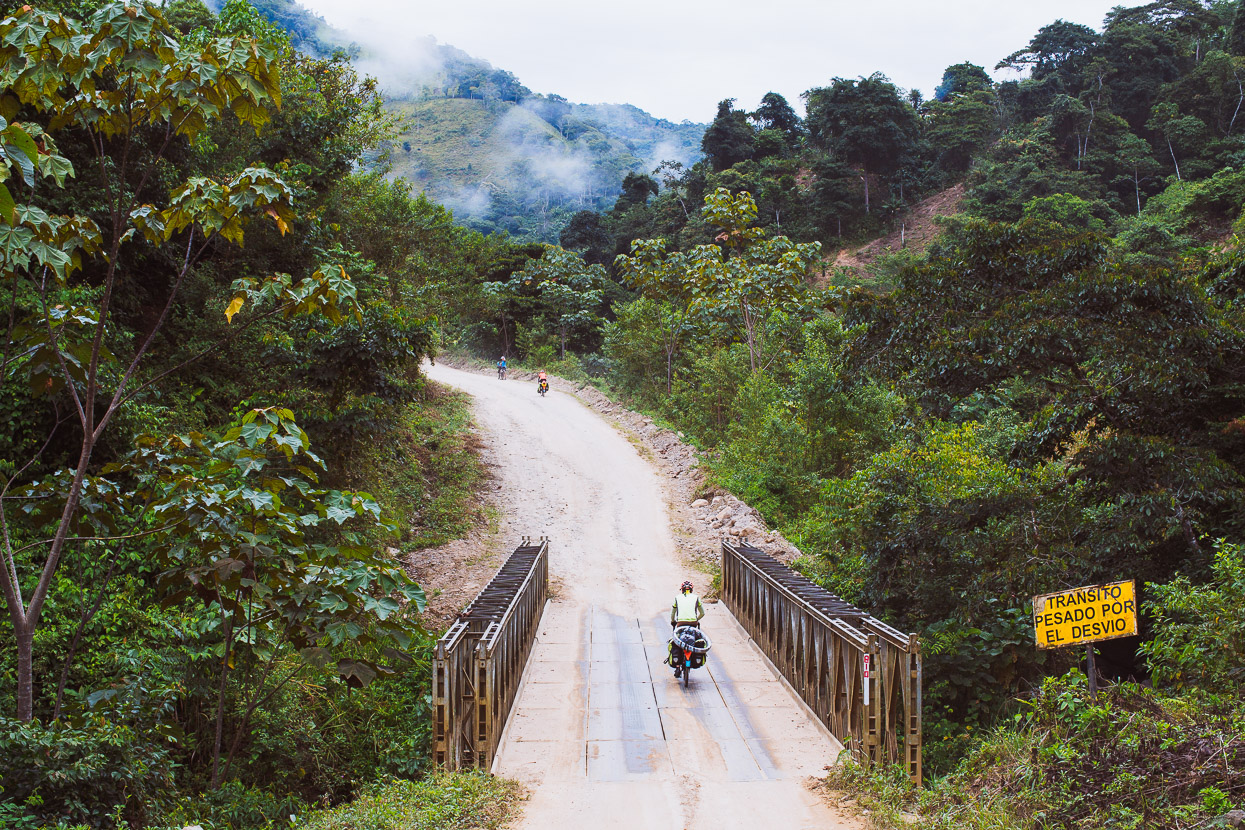
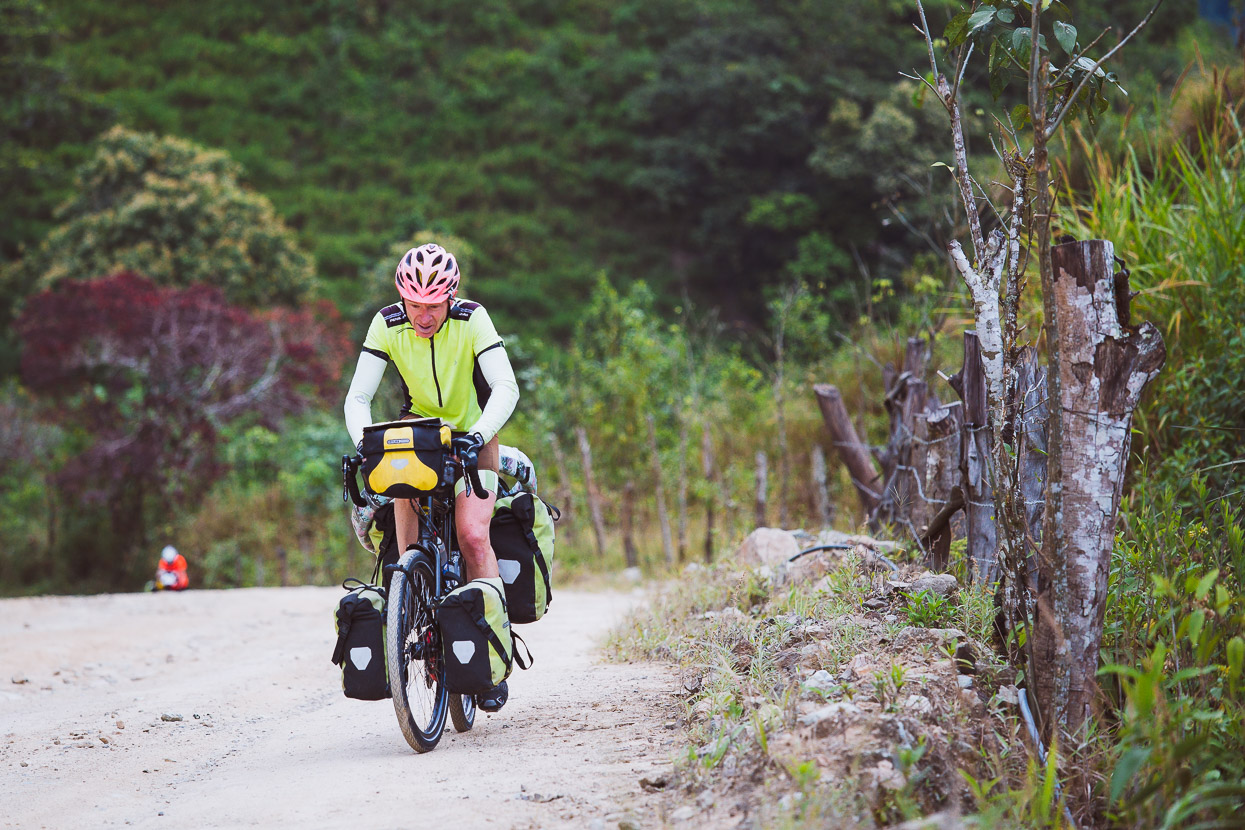
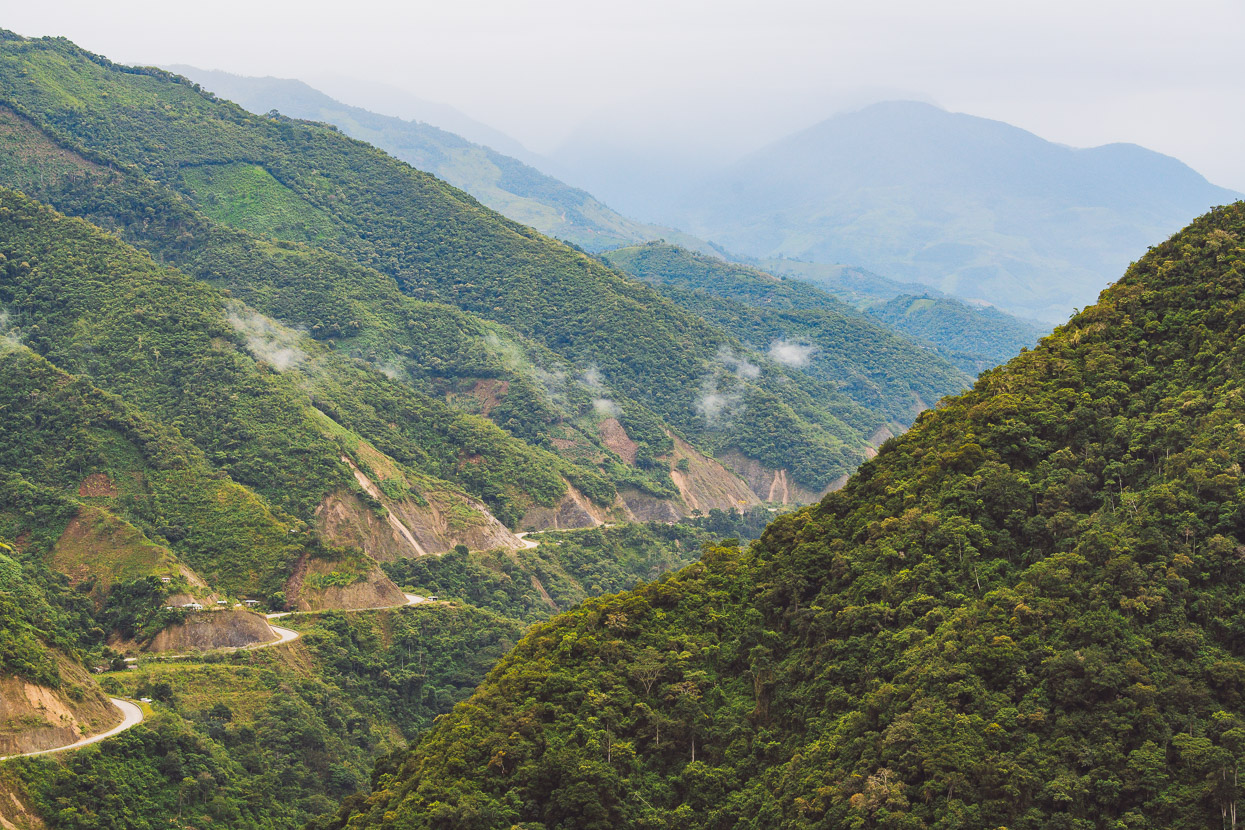
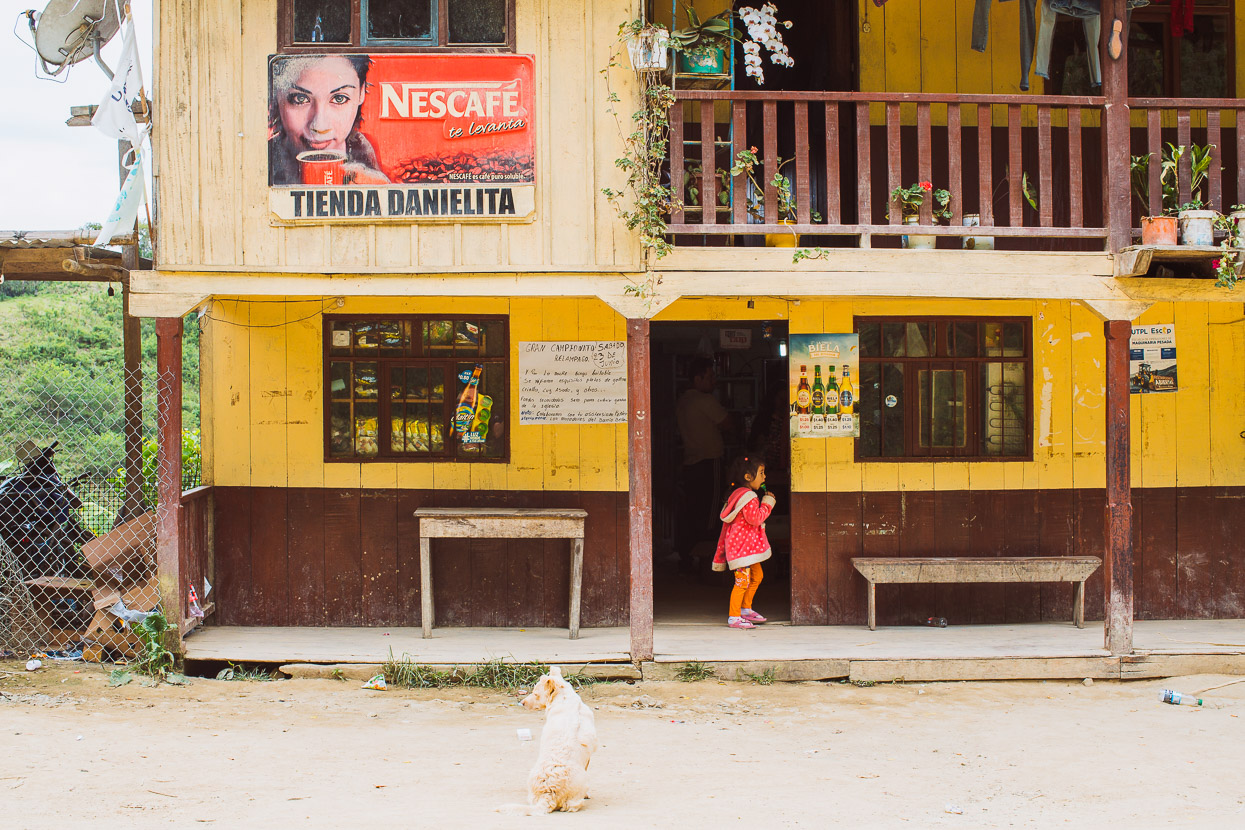
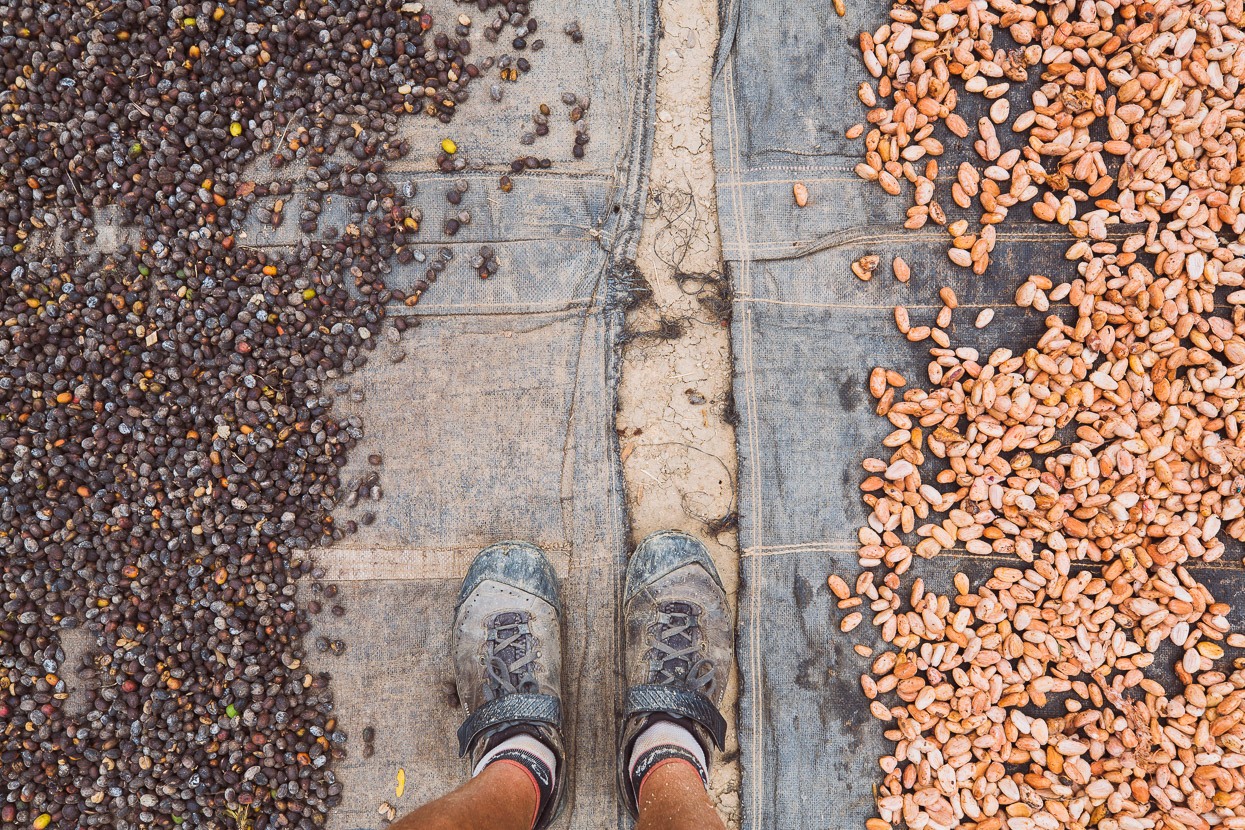
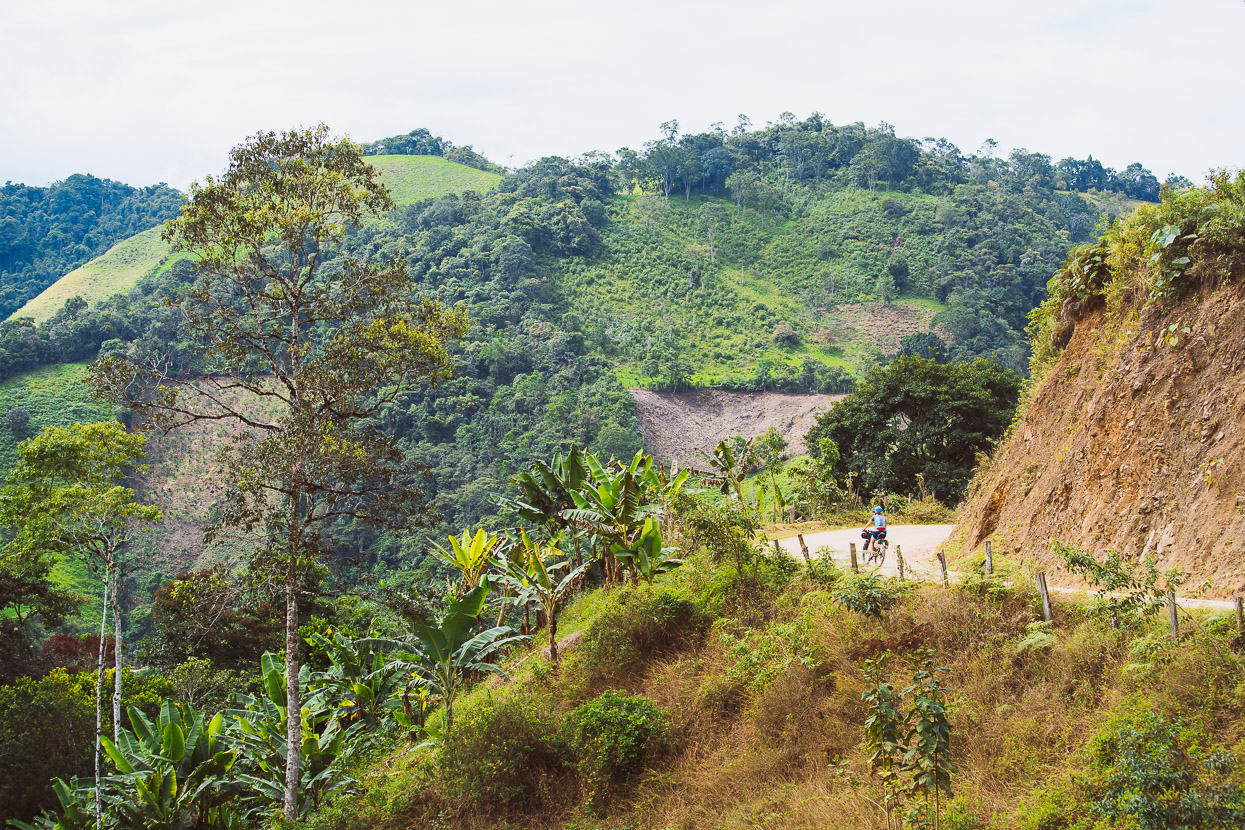
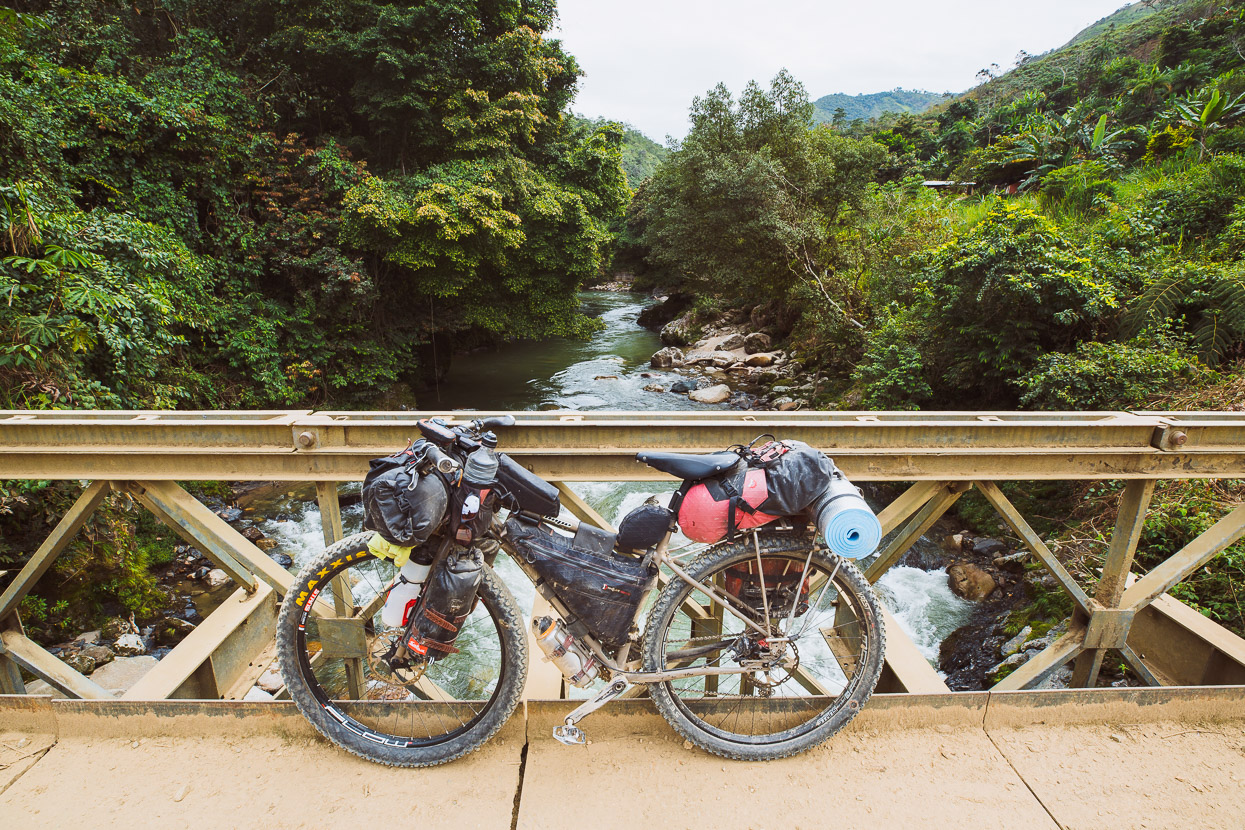
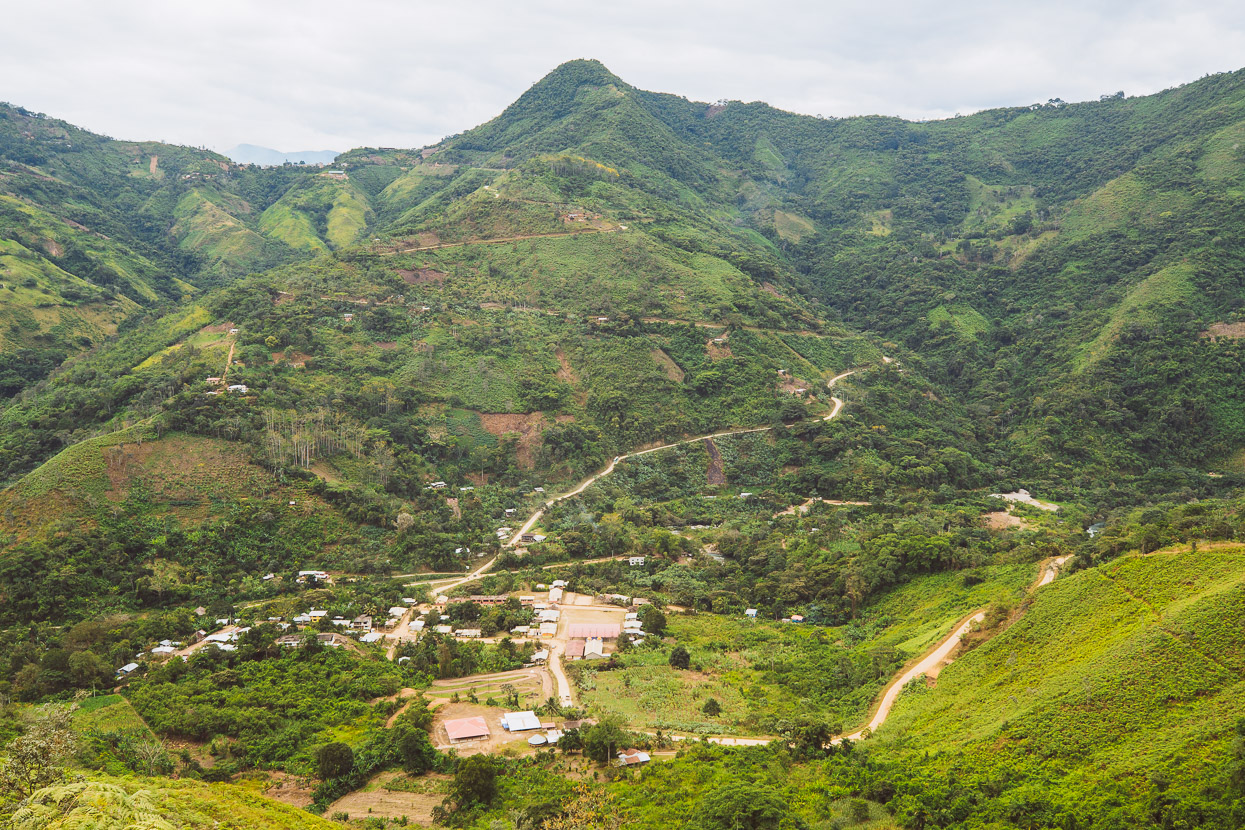
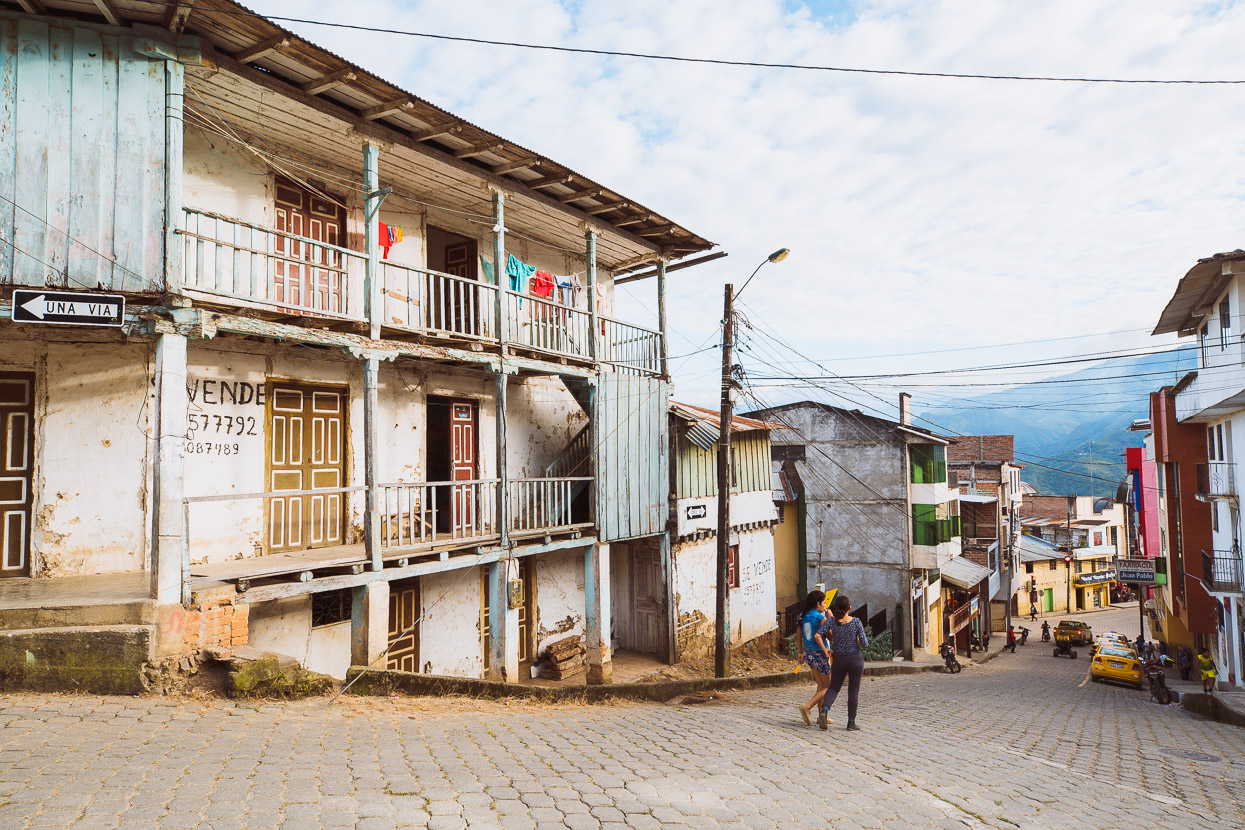
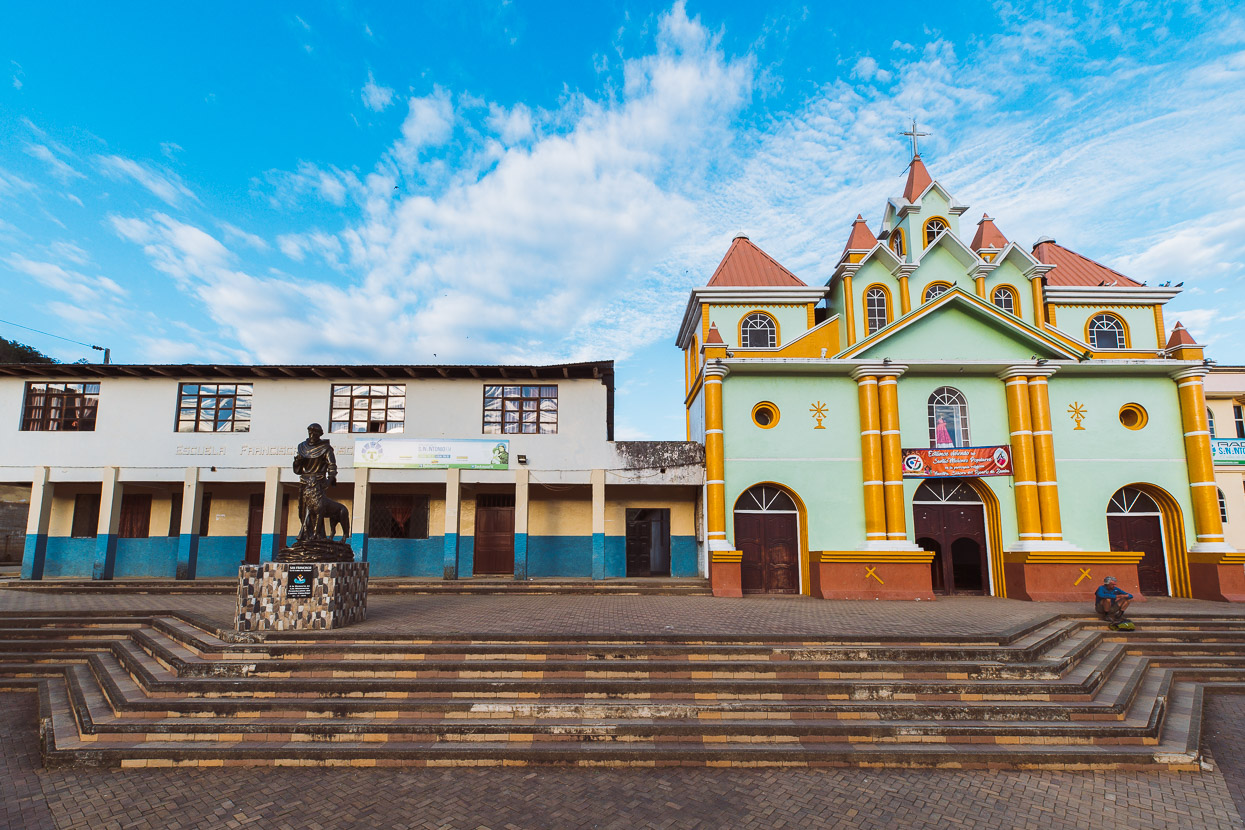
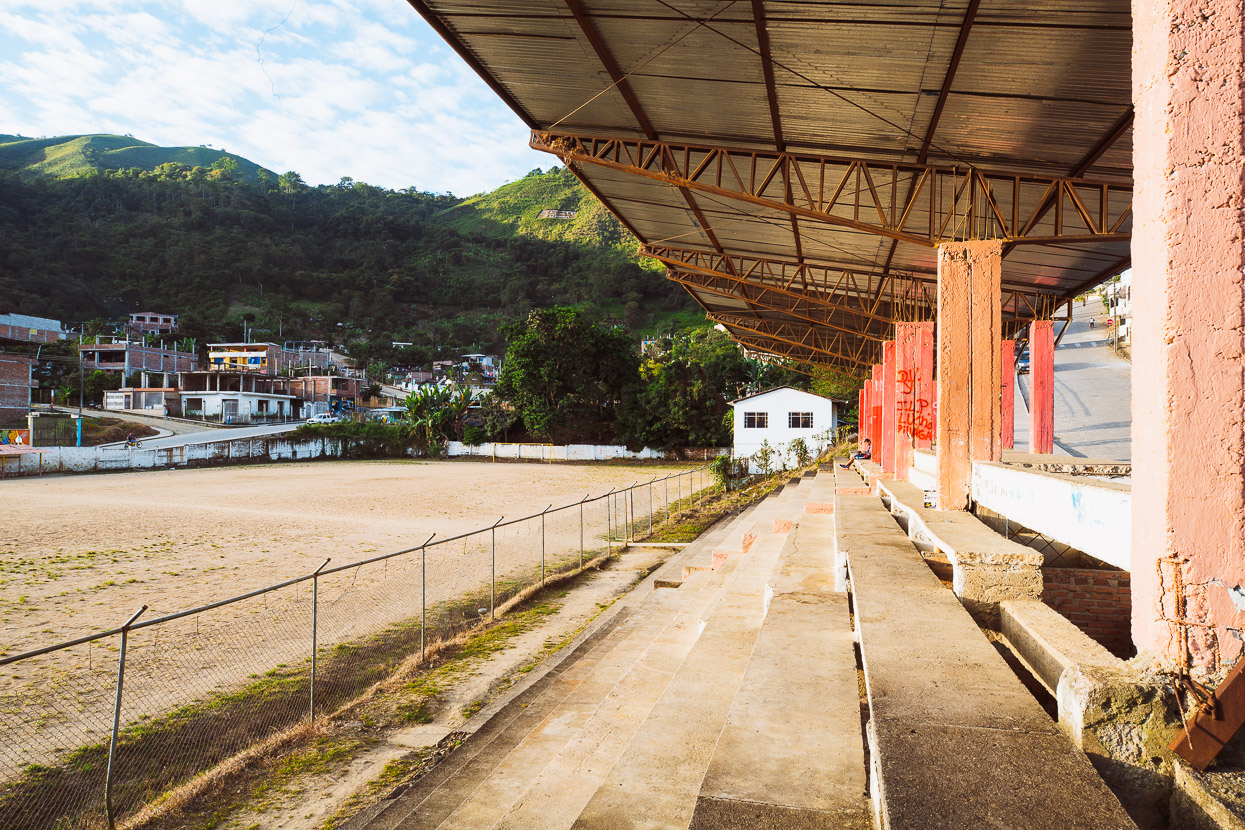
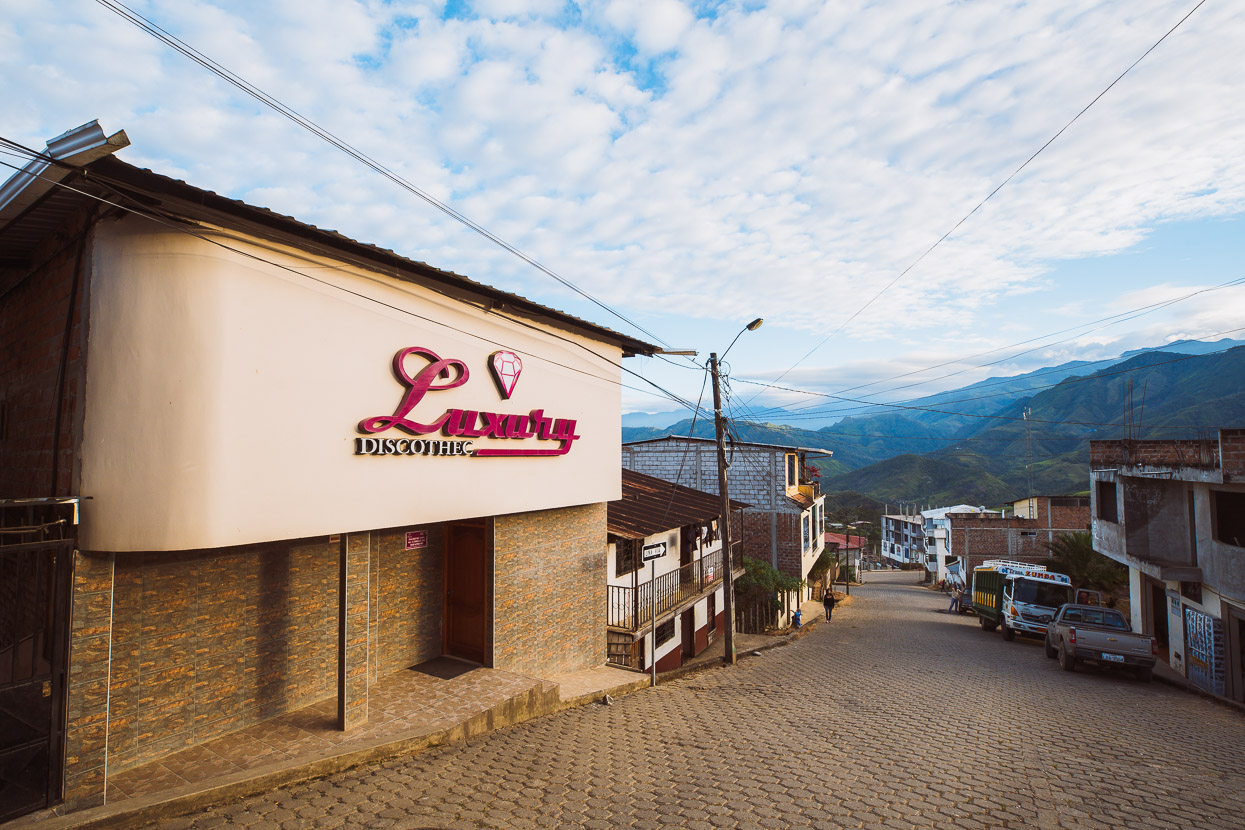
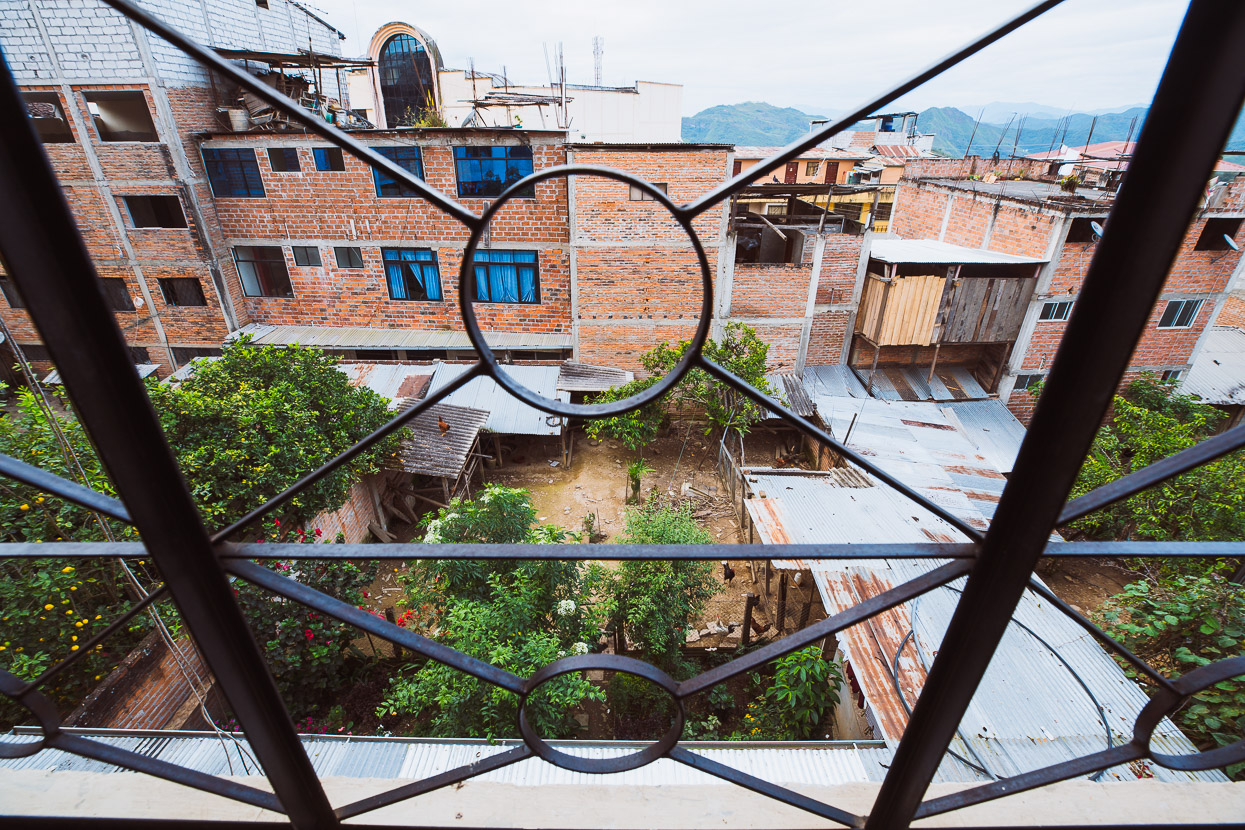
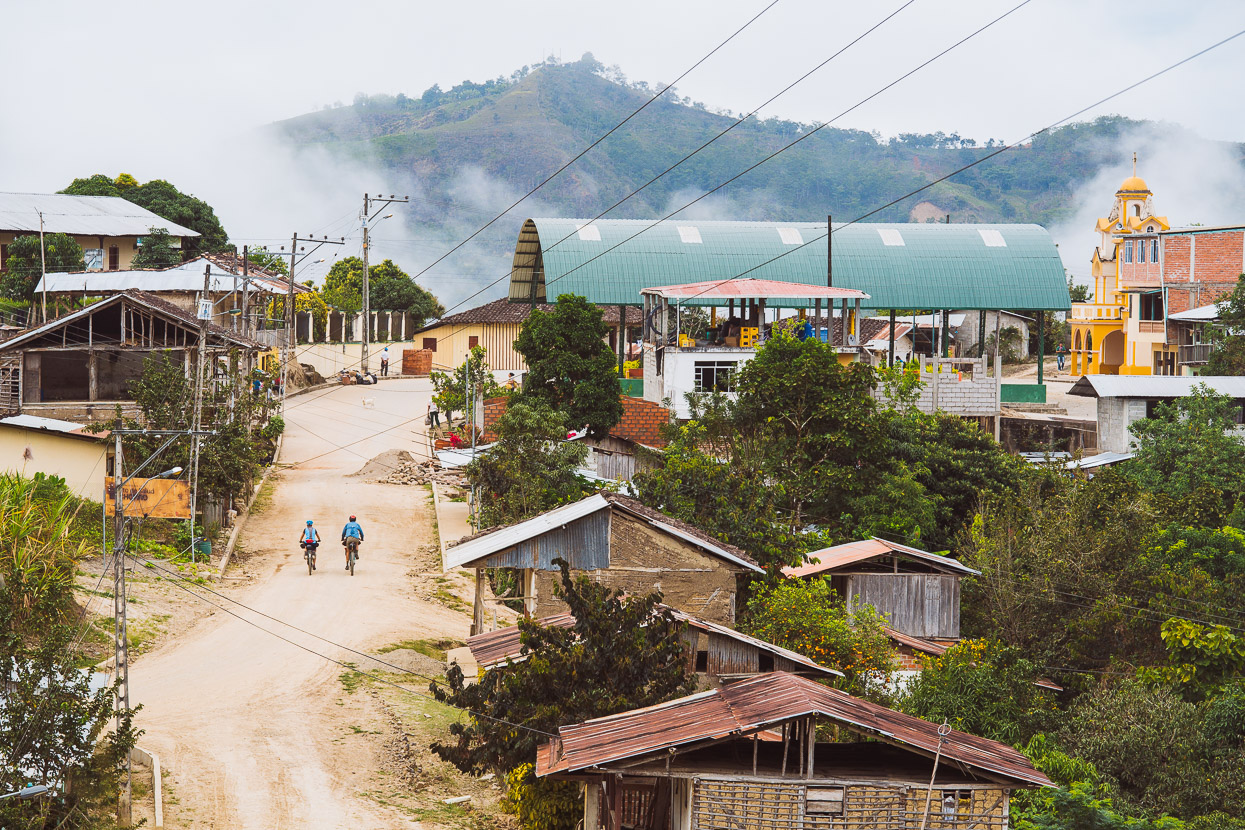
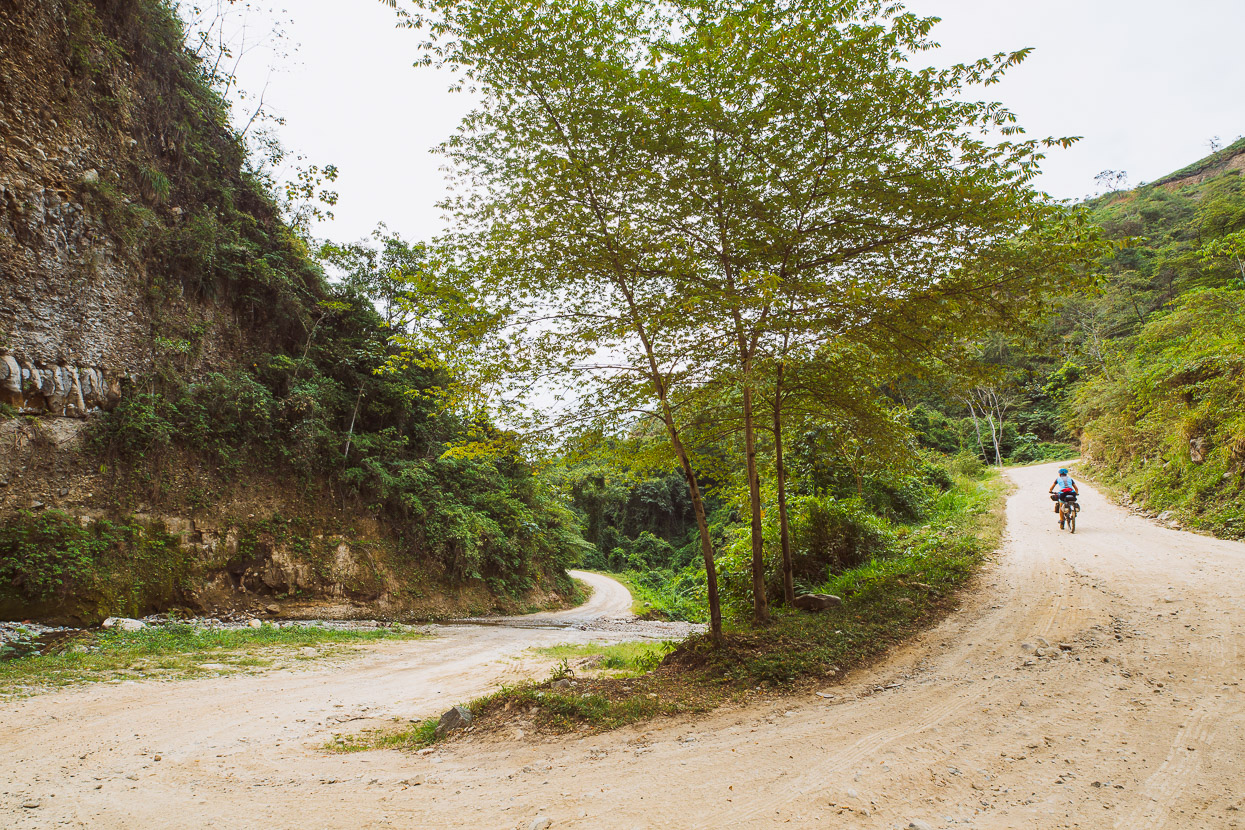
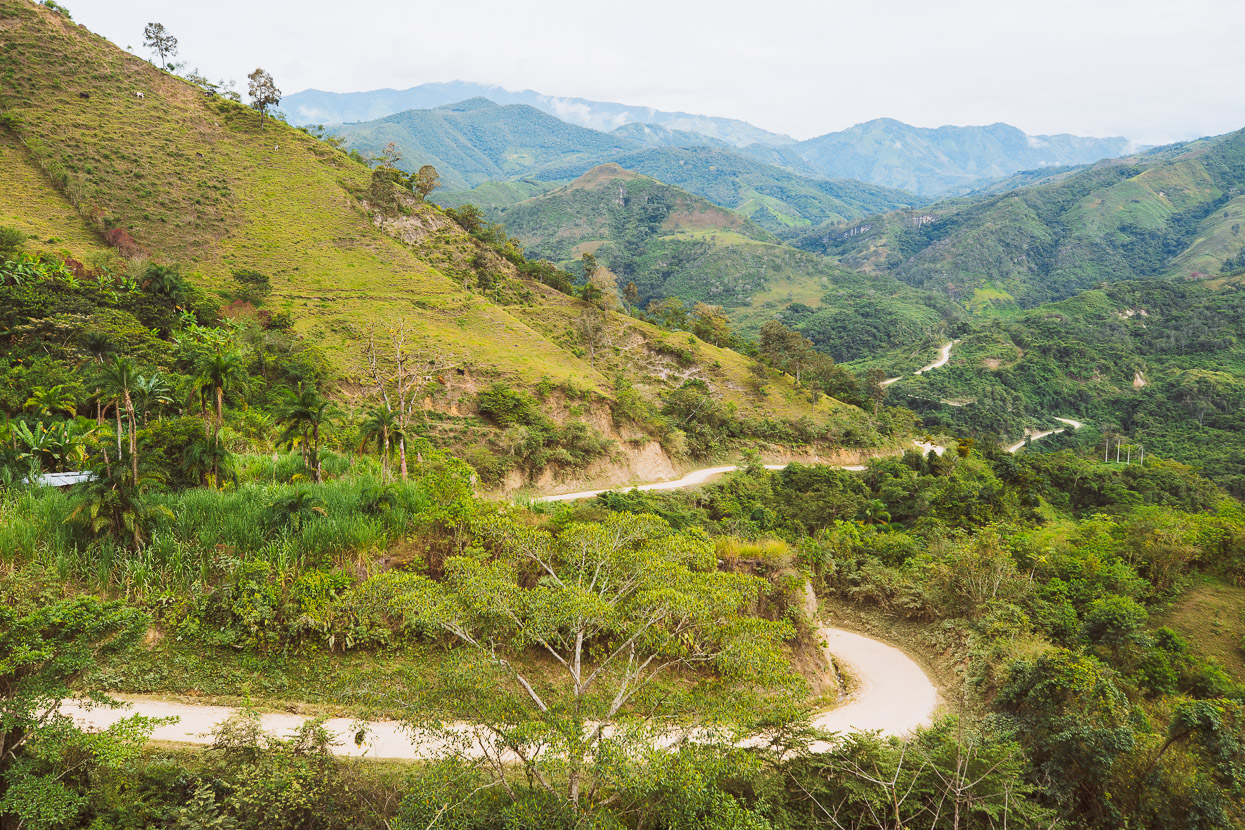
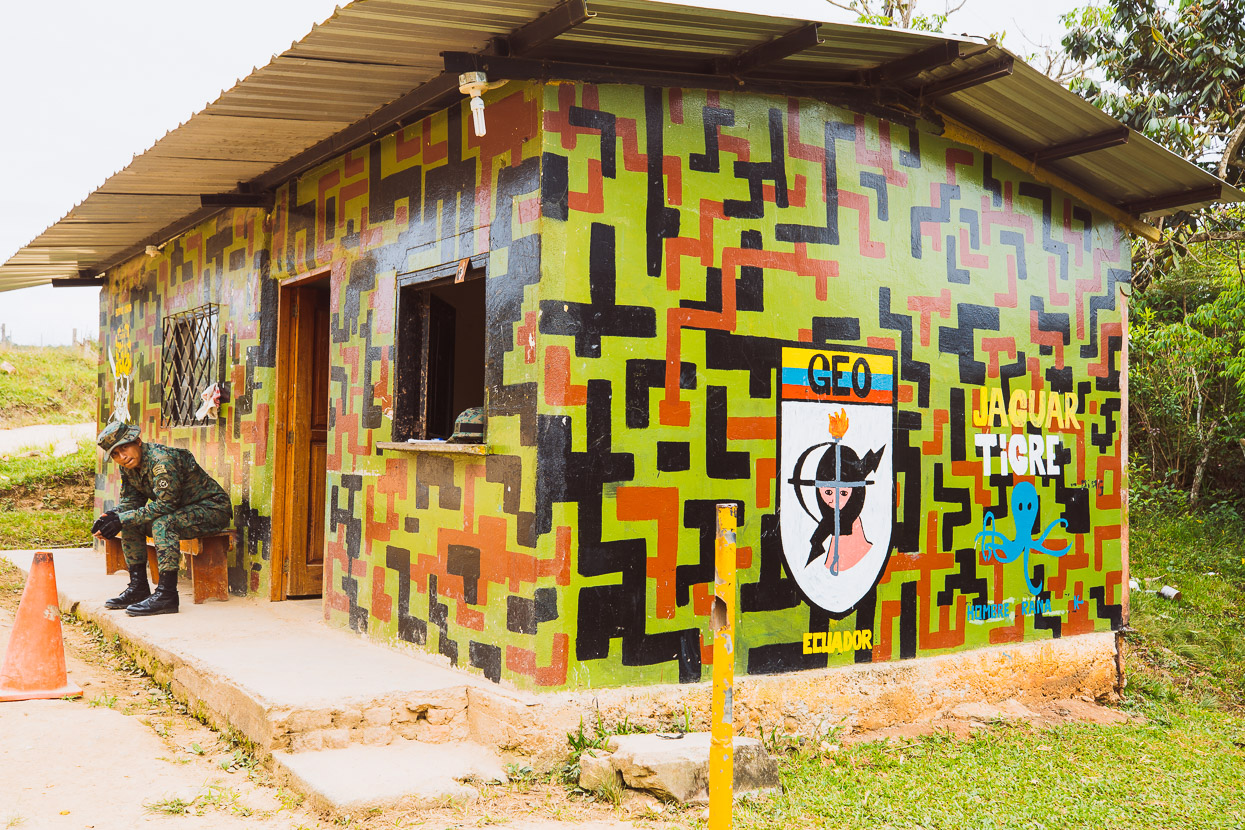
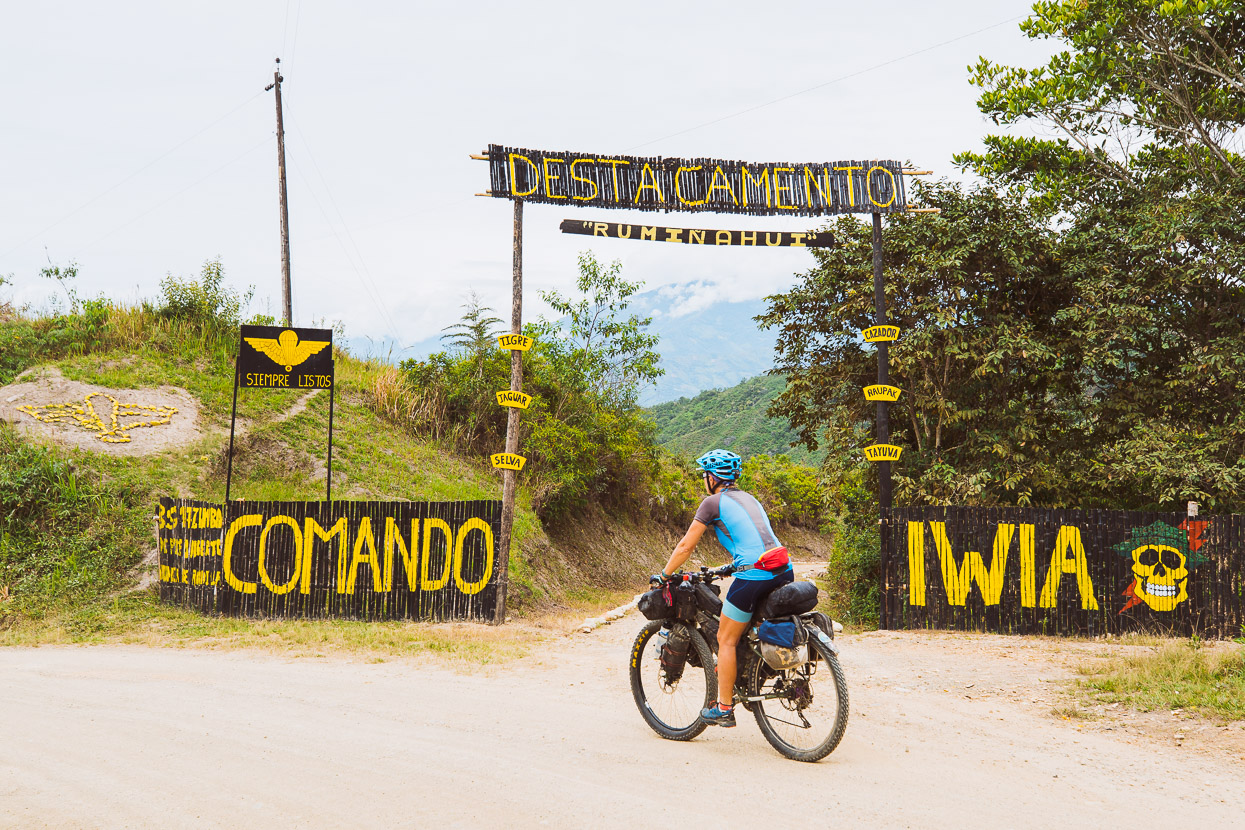
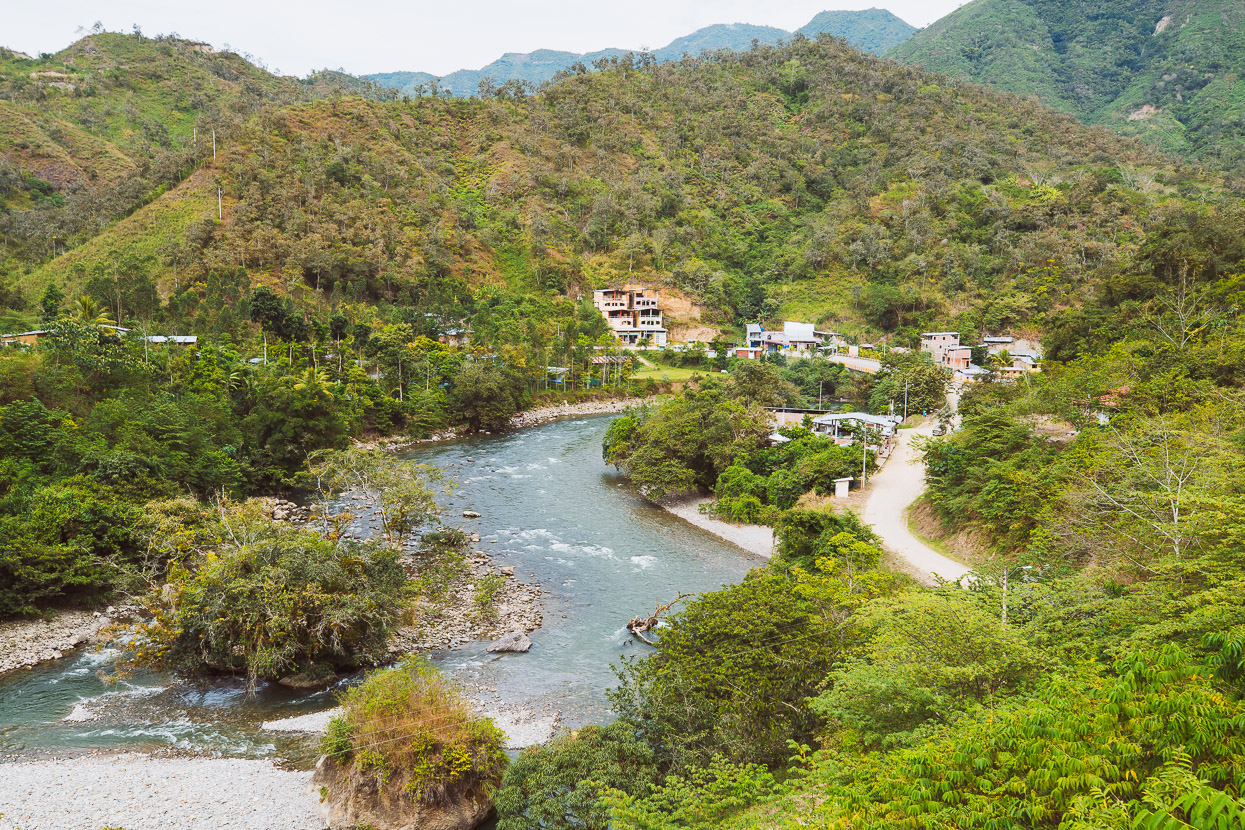
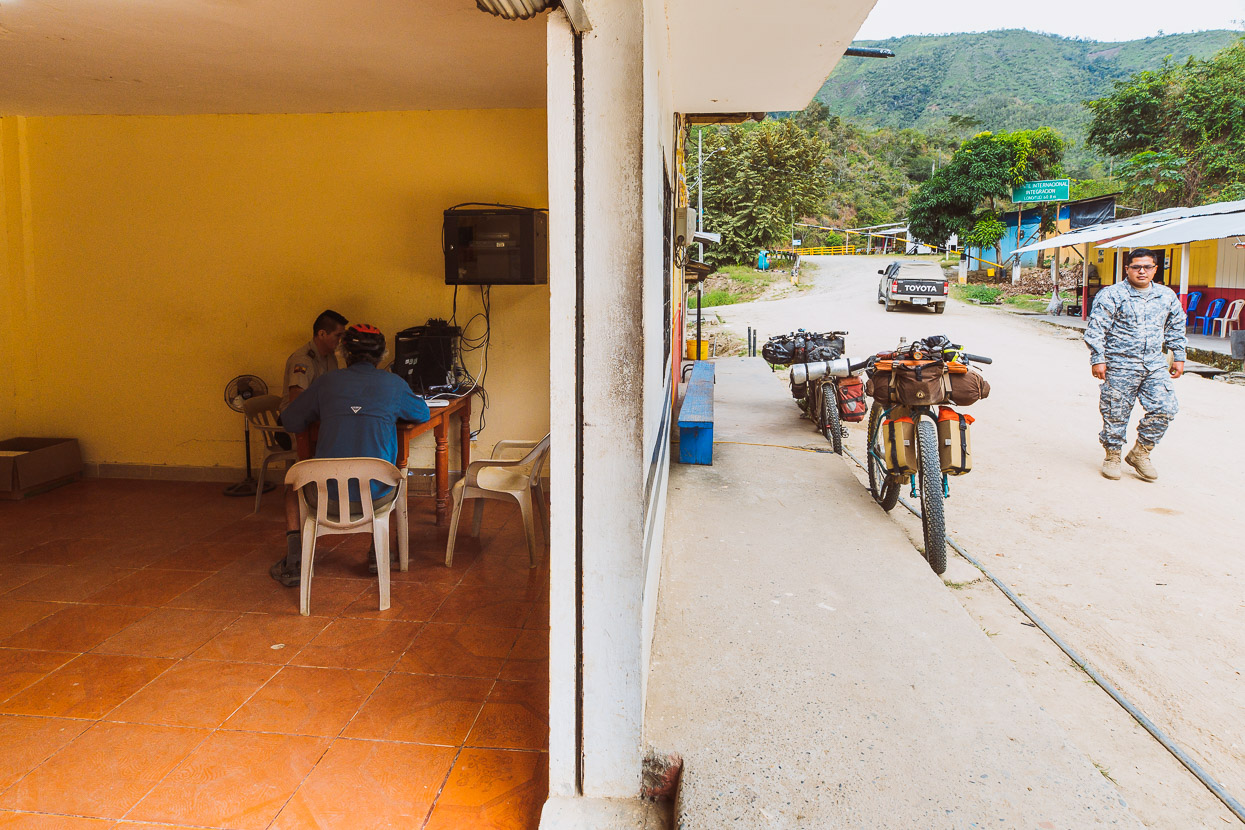
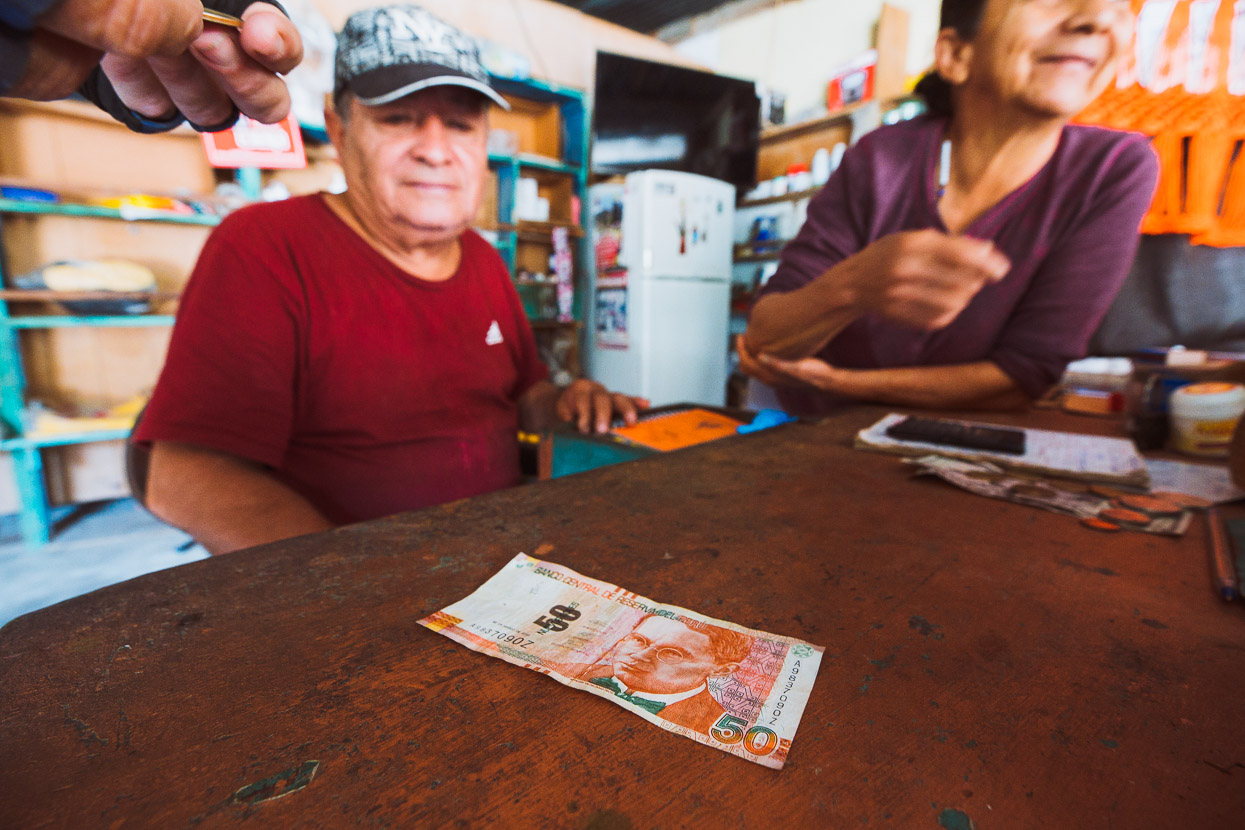
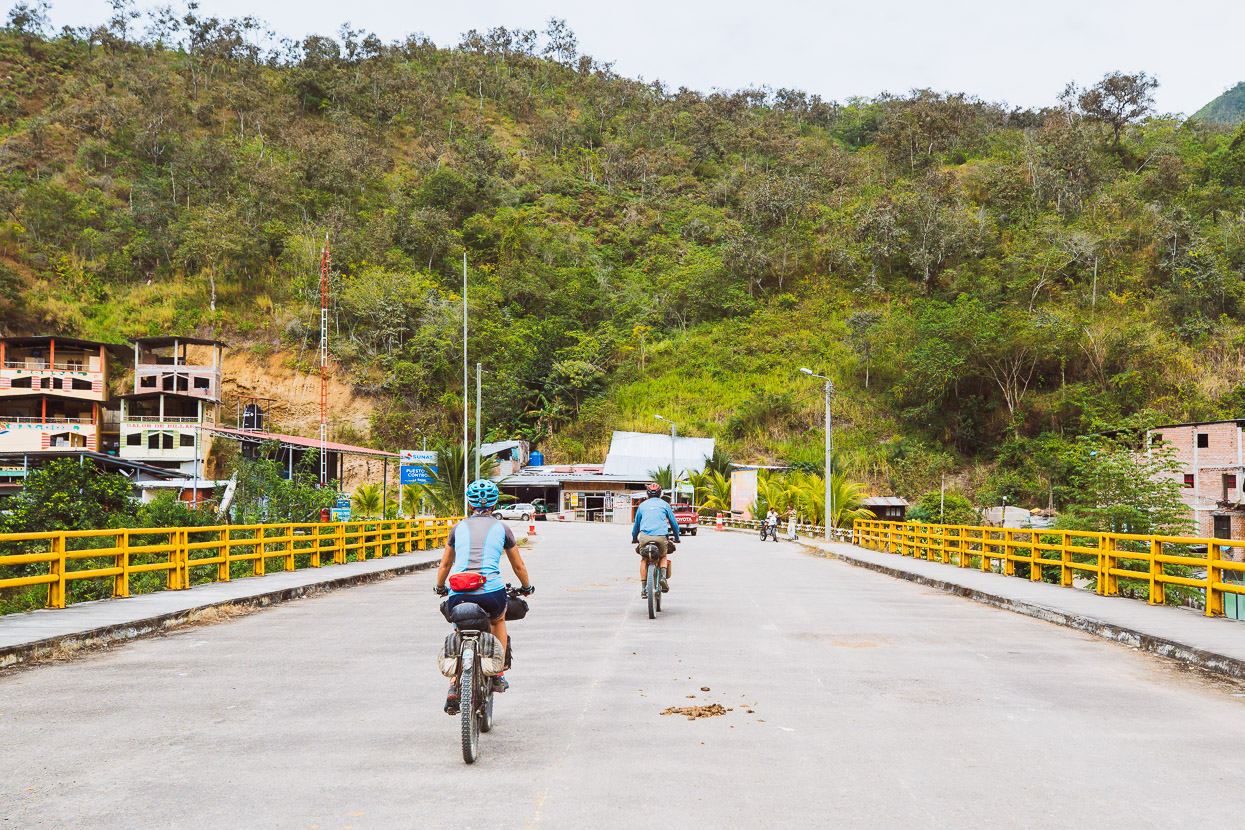





Is that Richard with the curly hair ? What a fine life Fernando has with 5 females in attendance ! Hannah must have an amazing collection of hats ? Love all those rolling hills, great photography. Did you partake of some crackling ? Slow down ! I’m enjoying the ride so much, I’ll be sad when you get to Argentina.
Haha – don’t worry – we’re scheming to keep on the road for a while longer… Peru is amazing, so it’s tempting to spend our whole 6 month visa here! We’ll keep you entertained for a while 😉
It’s a wonder there isn’t more tree planting on the hillsides to counteract the erosion ? The blue flowers in your blog are reminiscent of the Vipers Bugloss that grow in abundance round Omarama, they look very similar ? Great landscape vistas – loving it !
The blue flowers are lupines, which too, are common in NZ and something of a (colourful) plague in the Mackenzie Region. The landscapes blow us away too – and they just get better and better here in Peru! 🙂